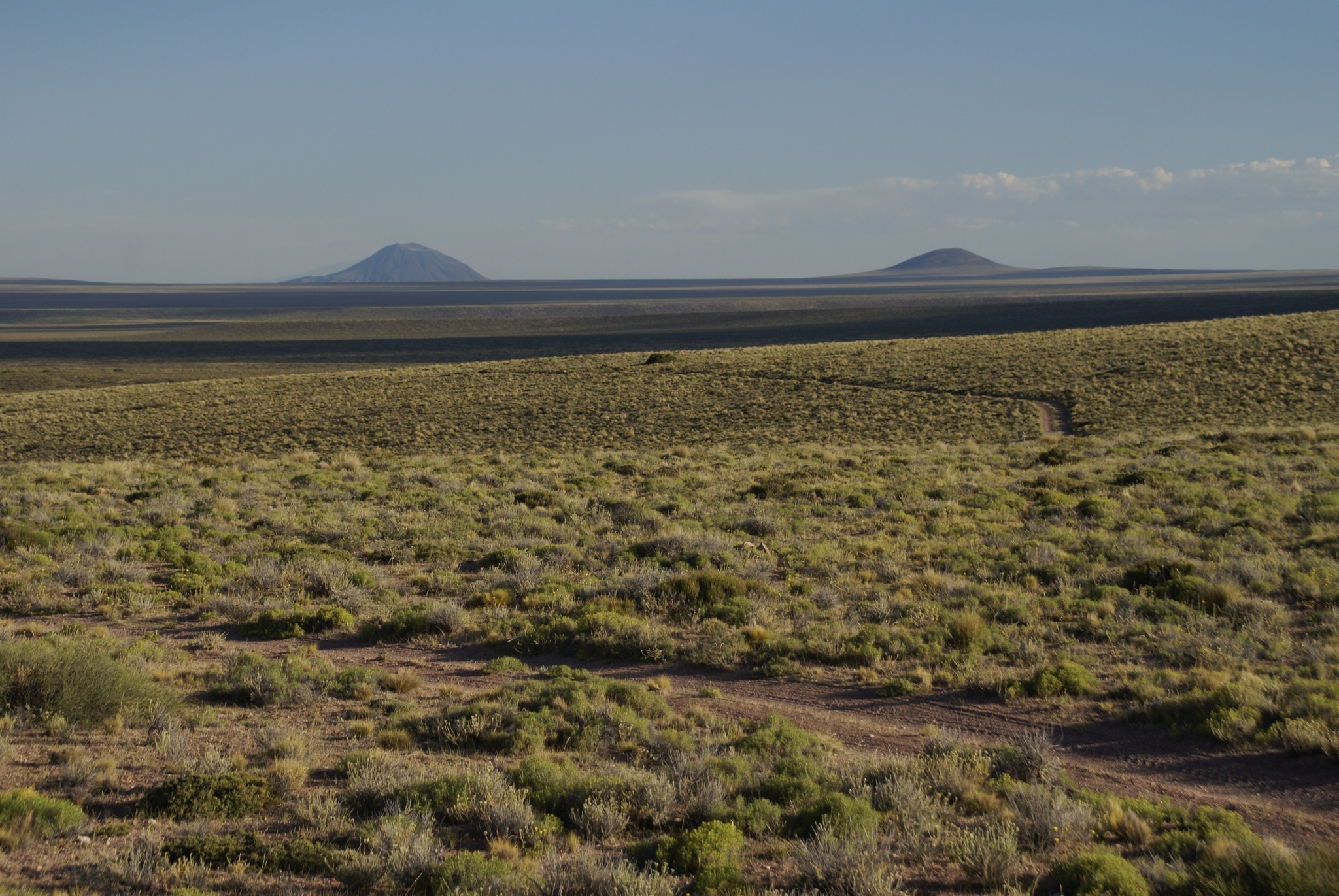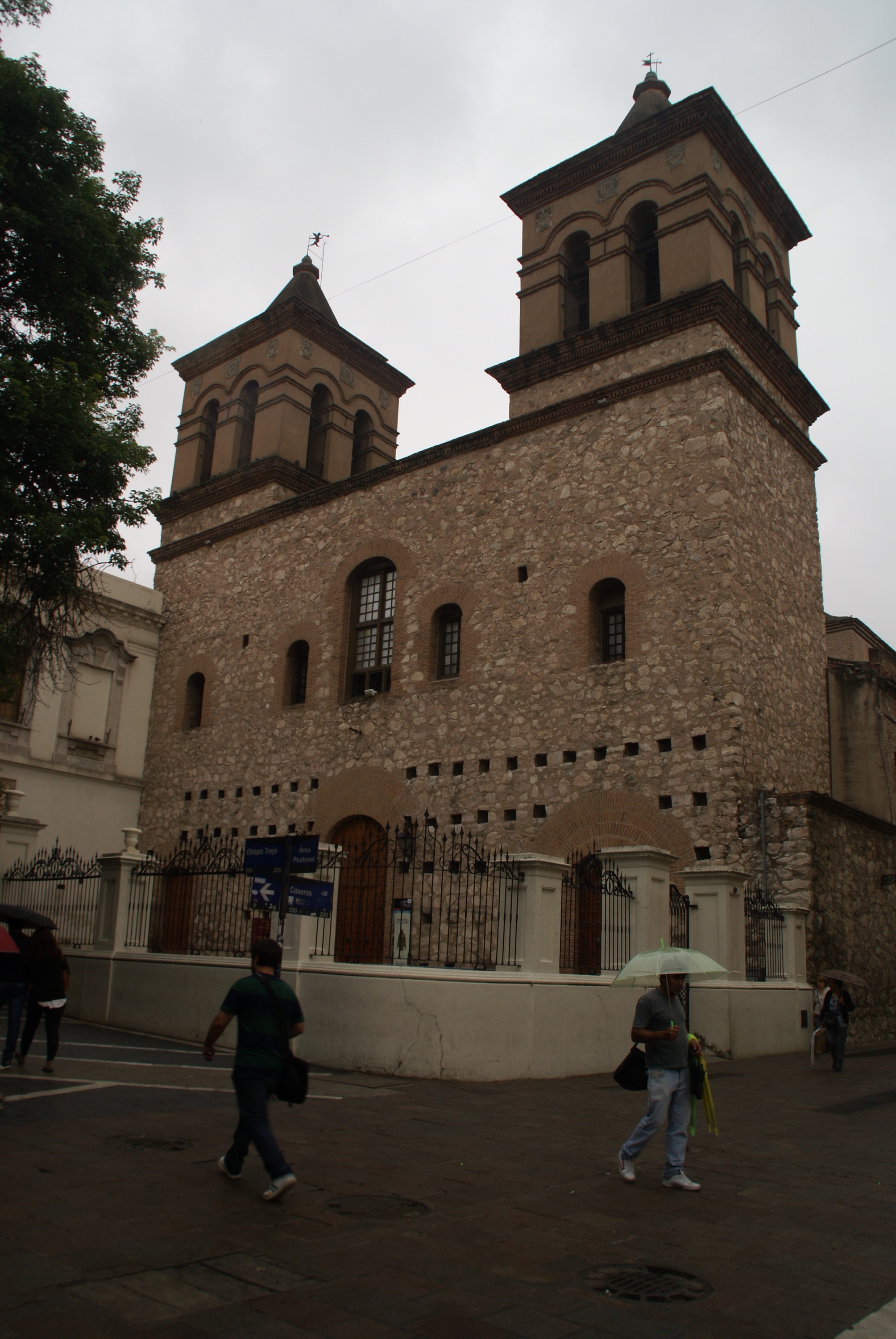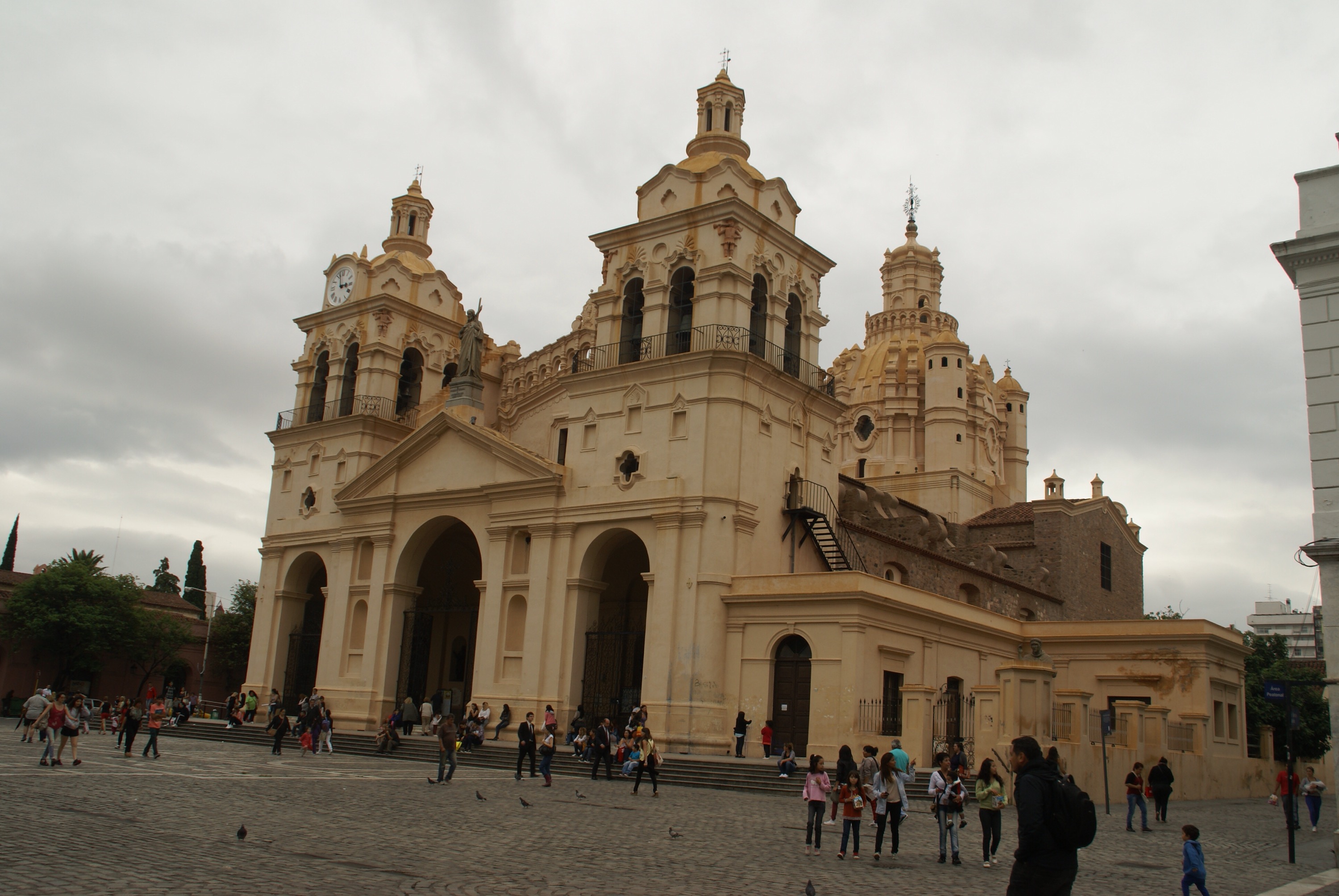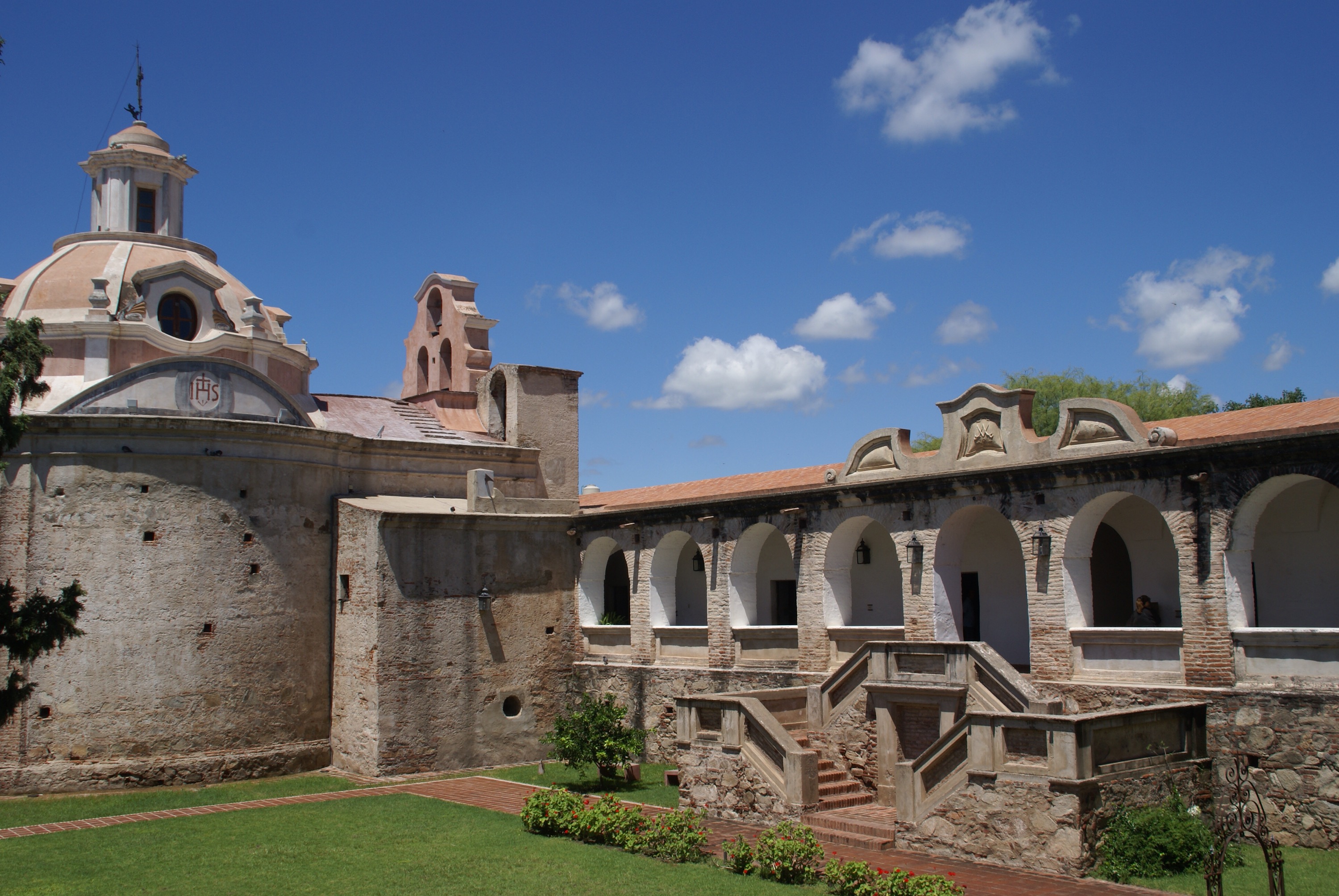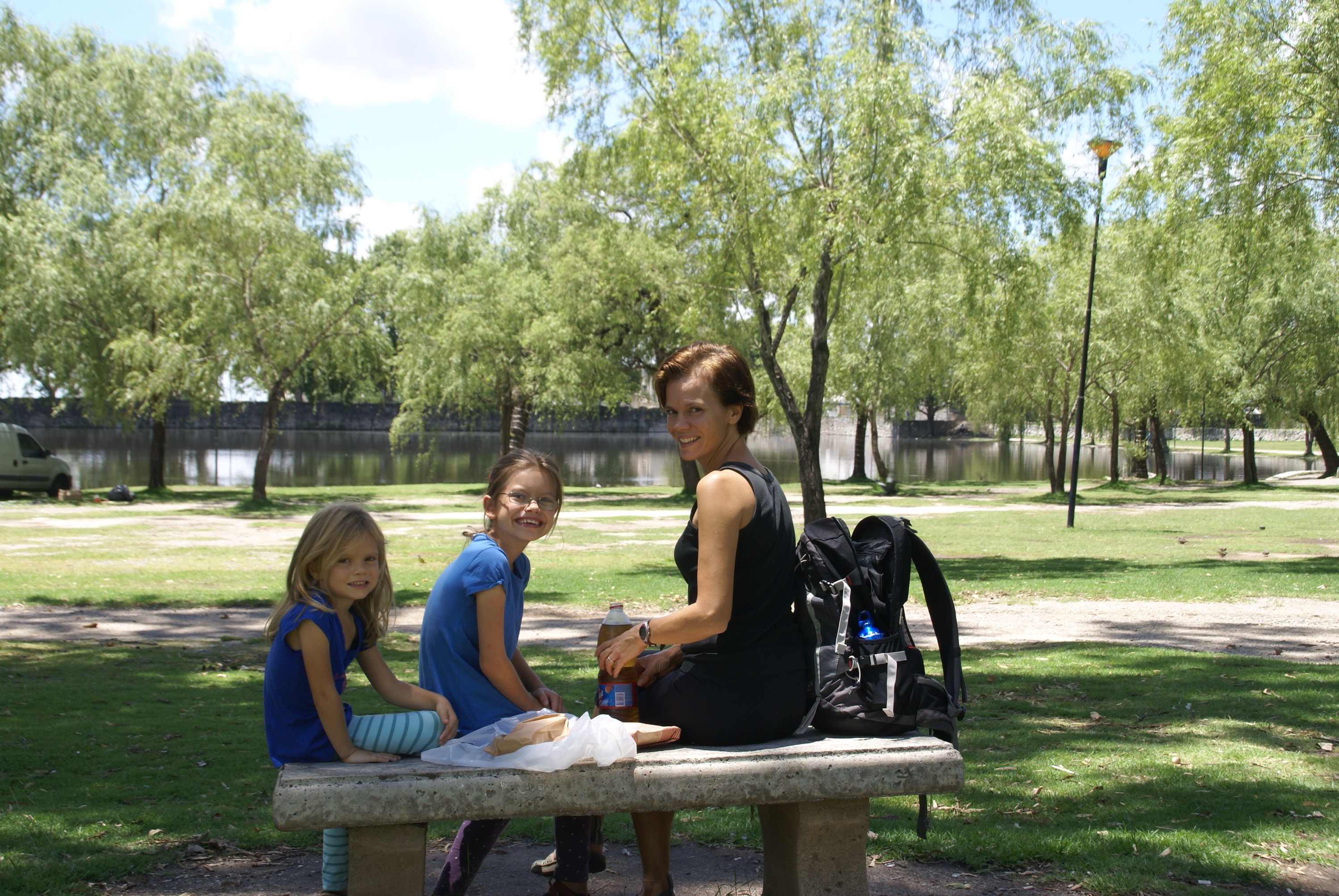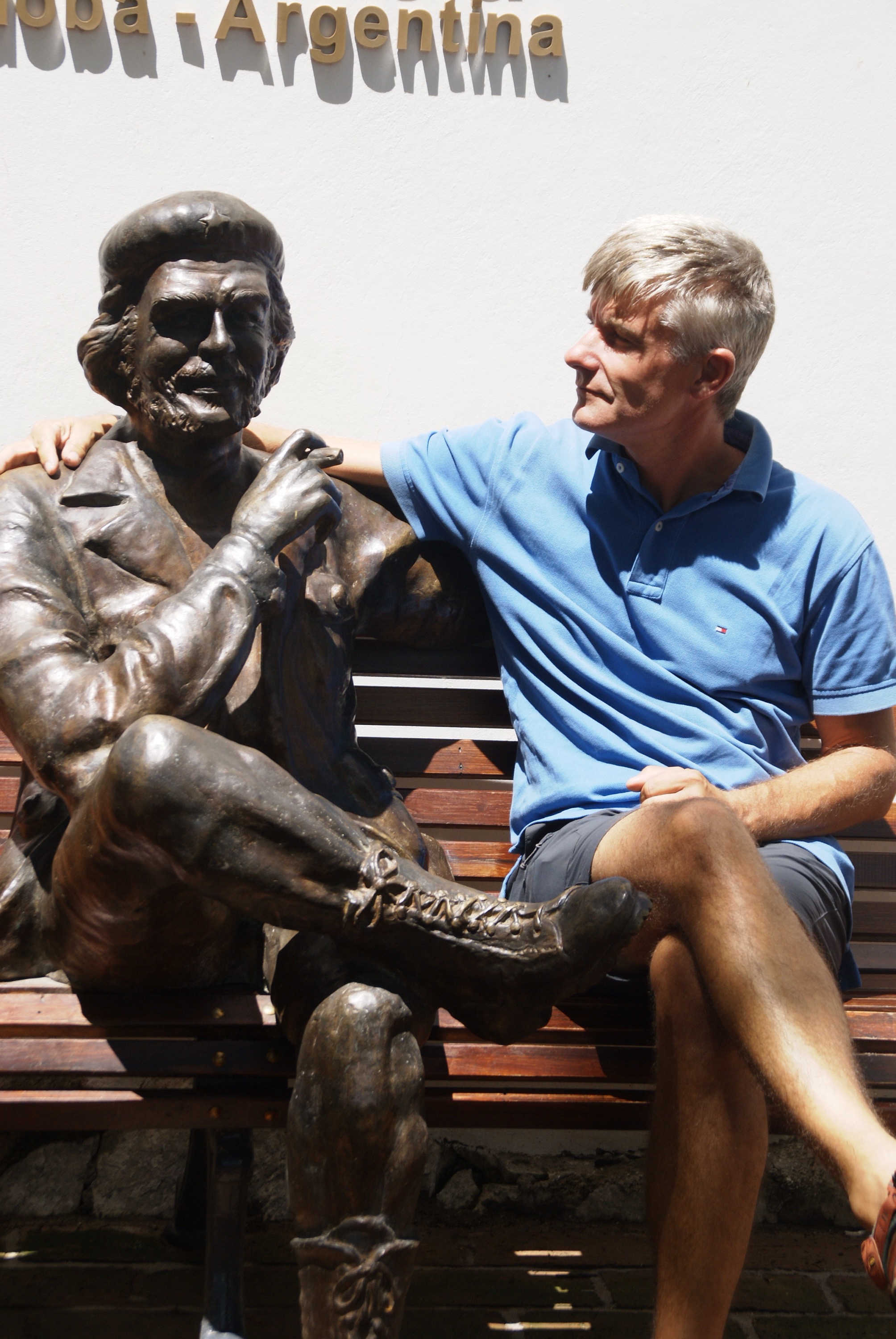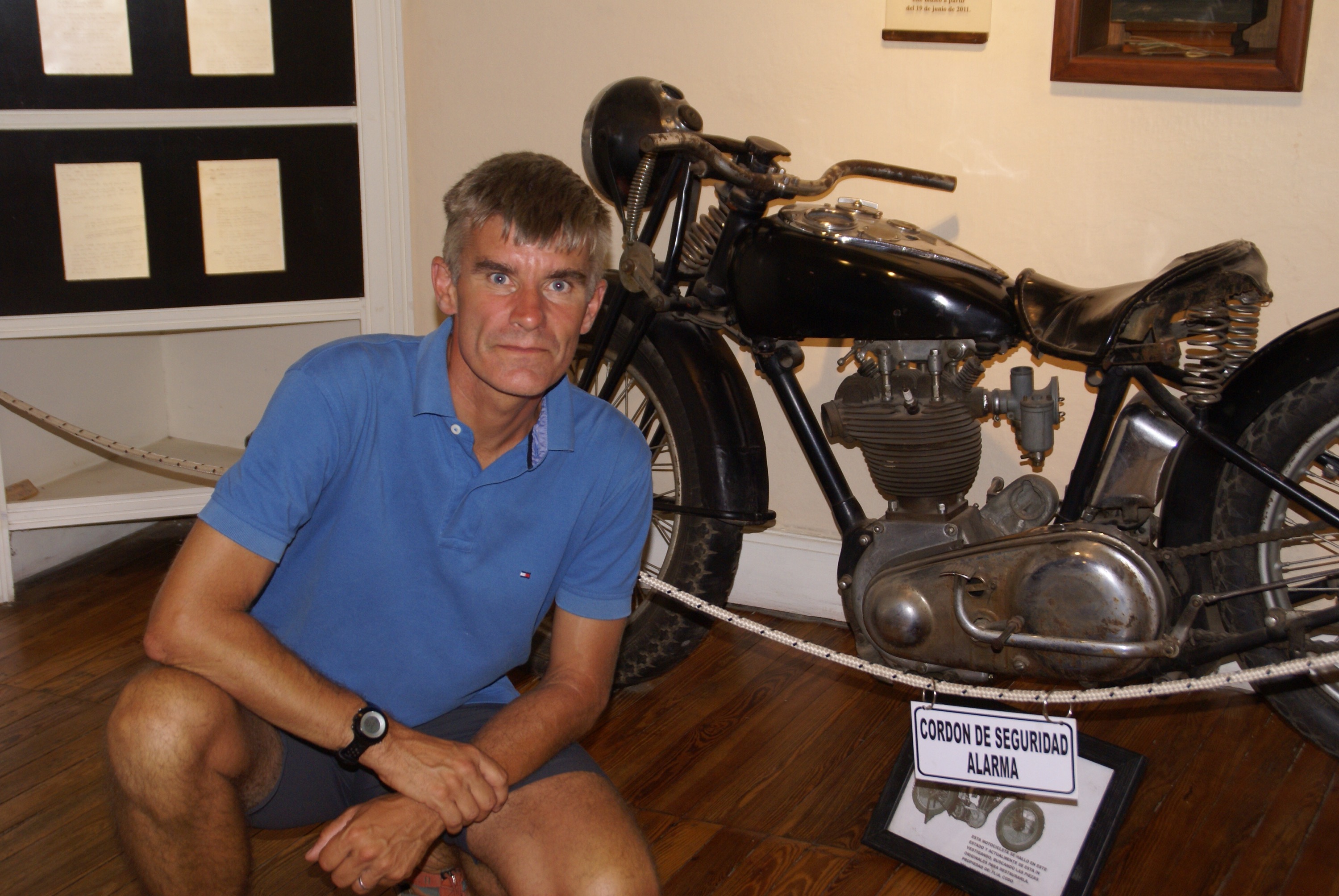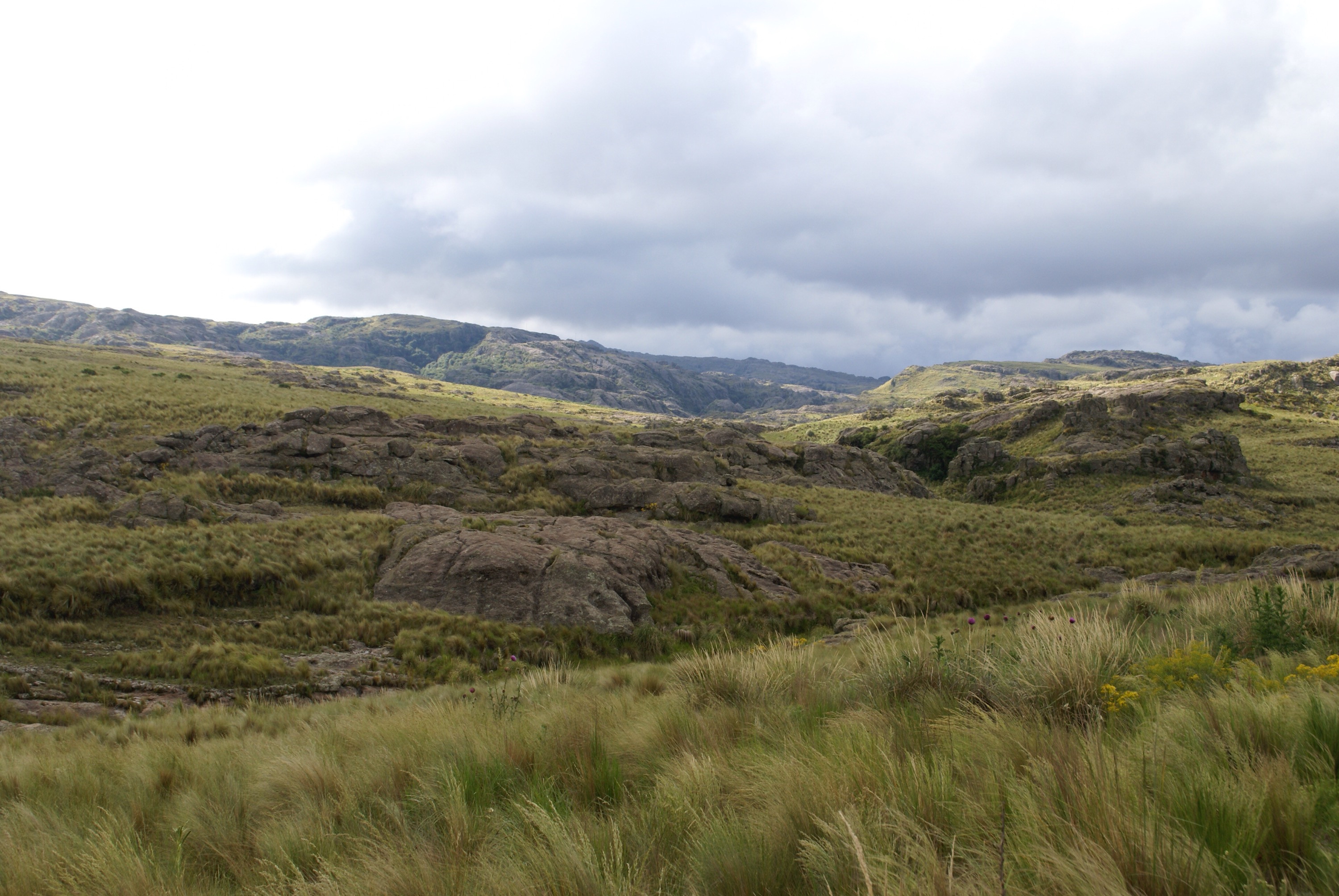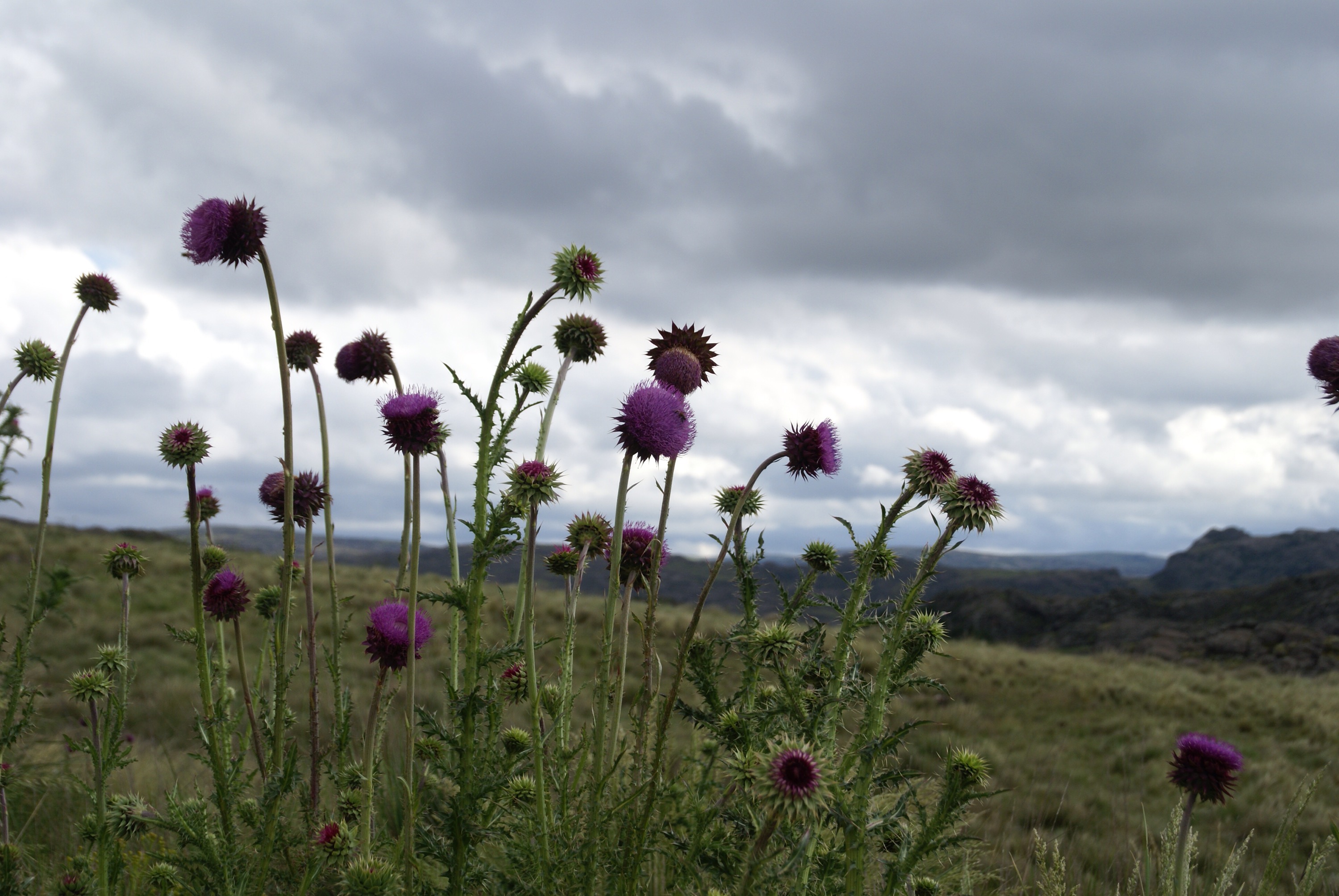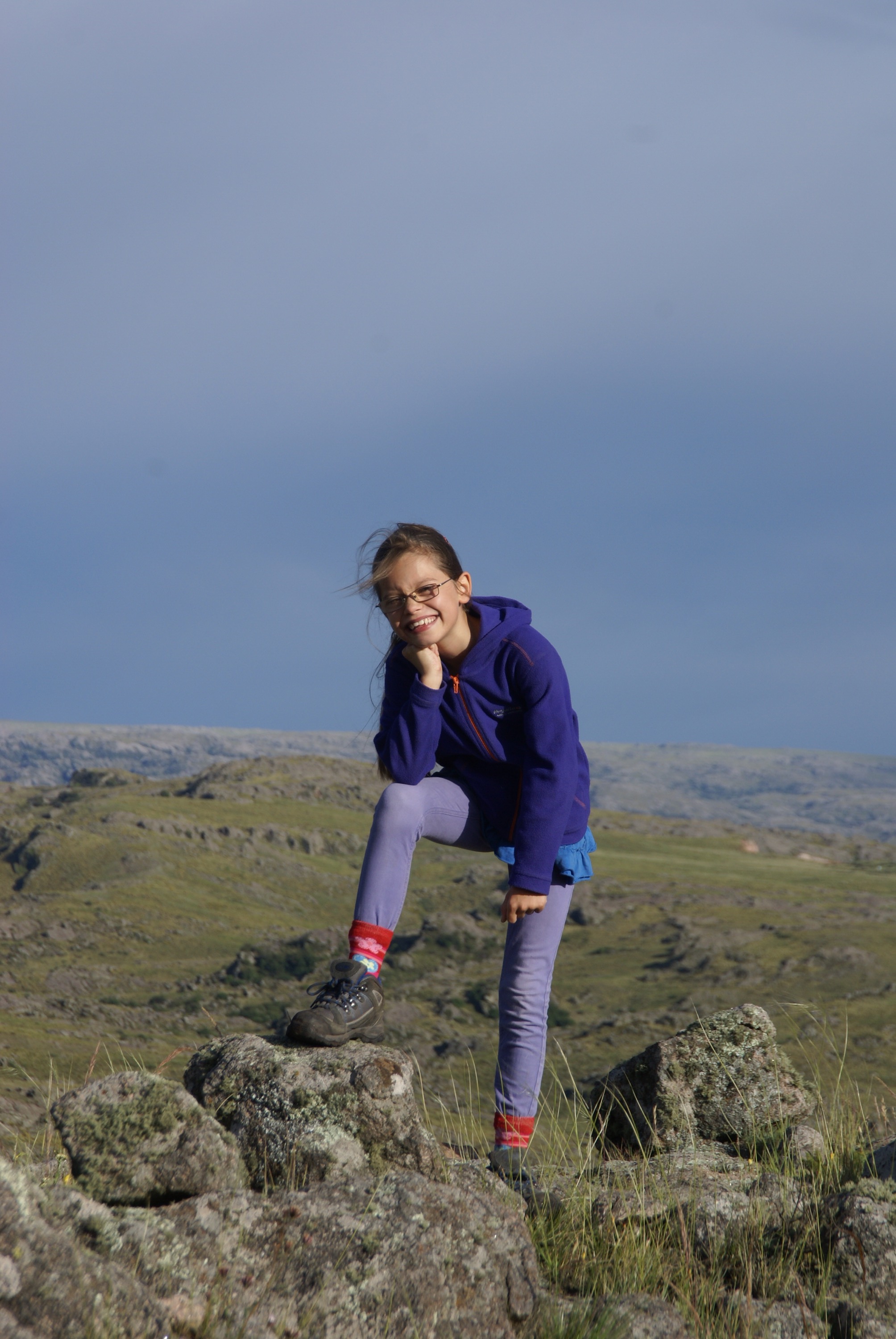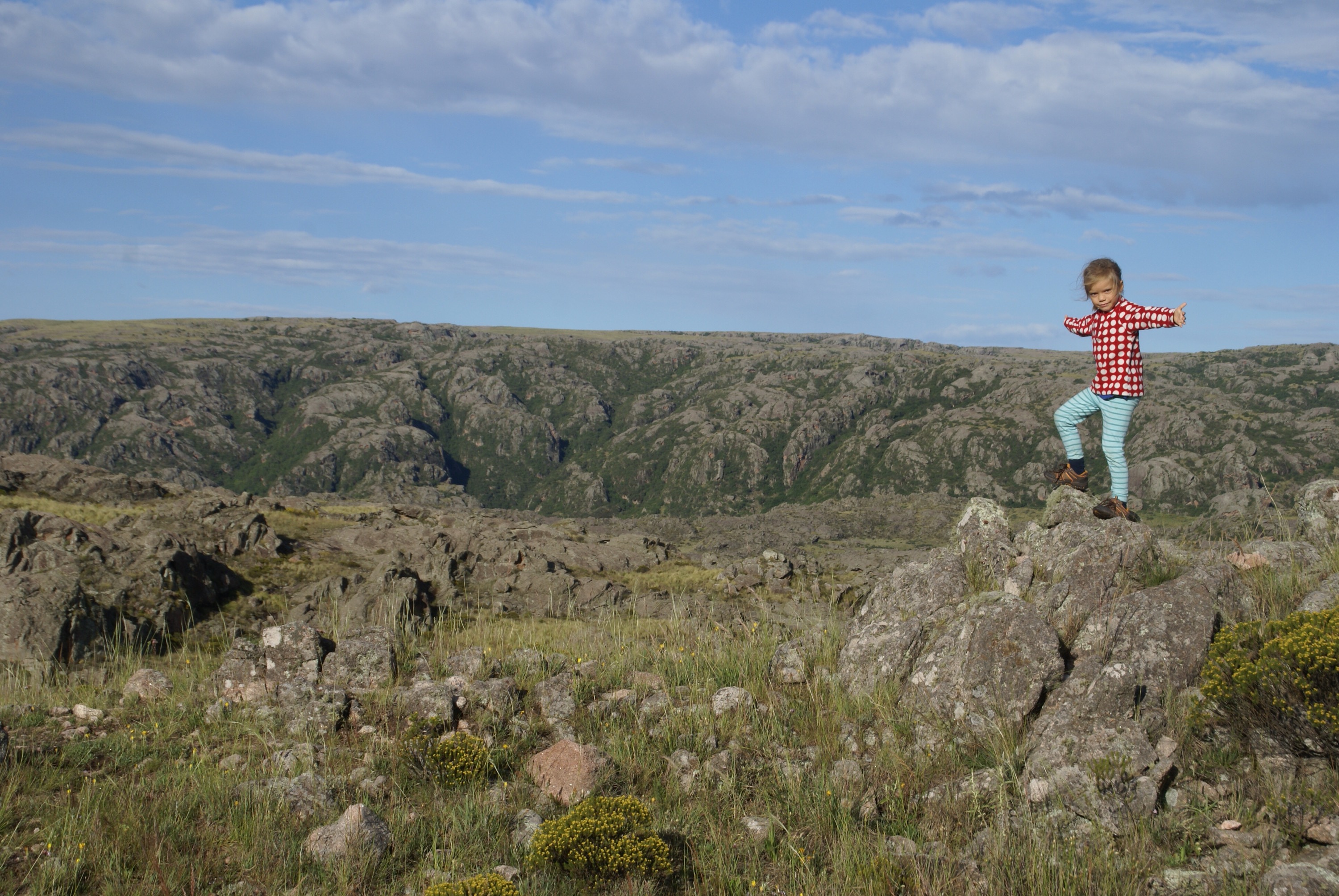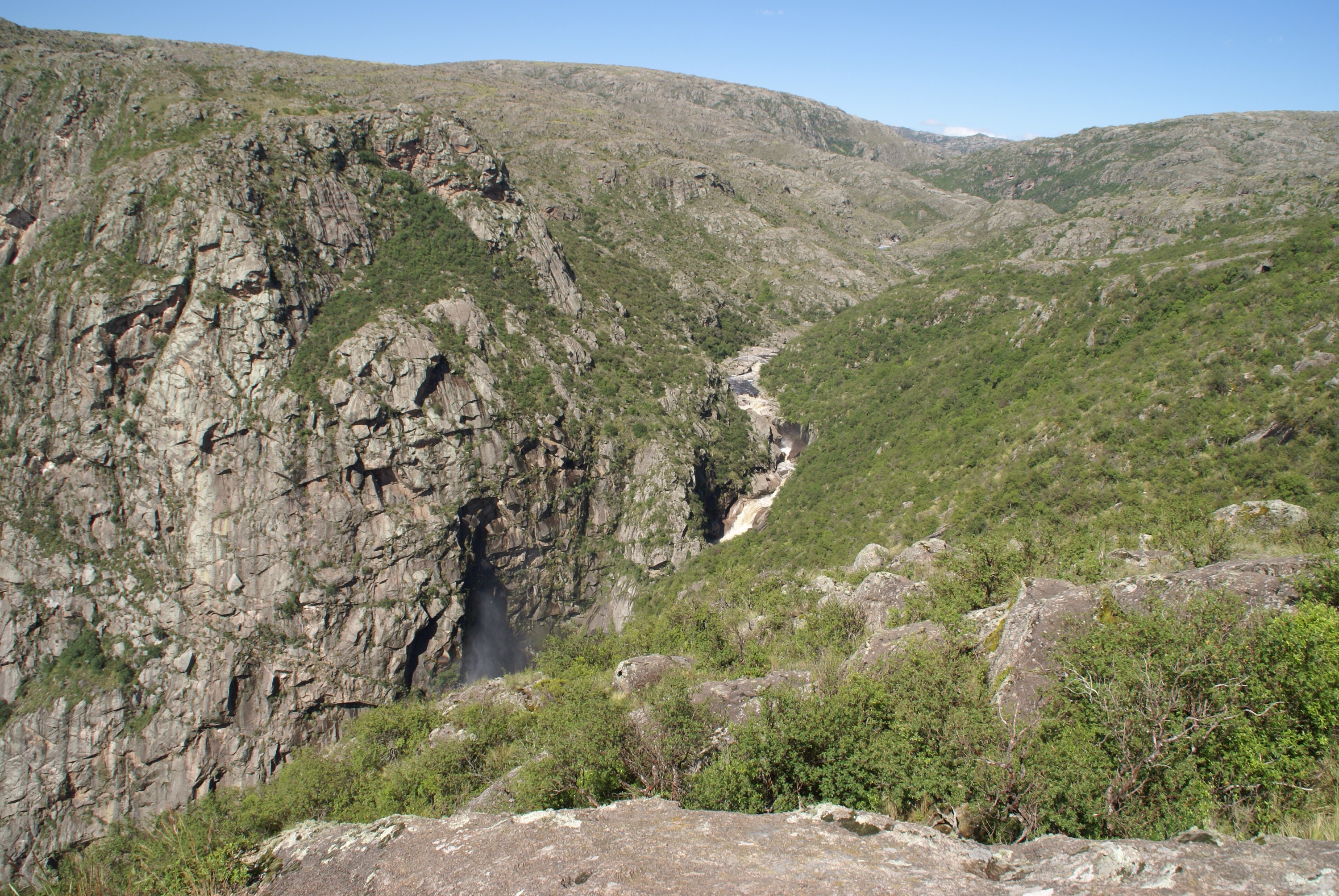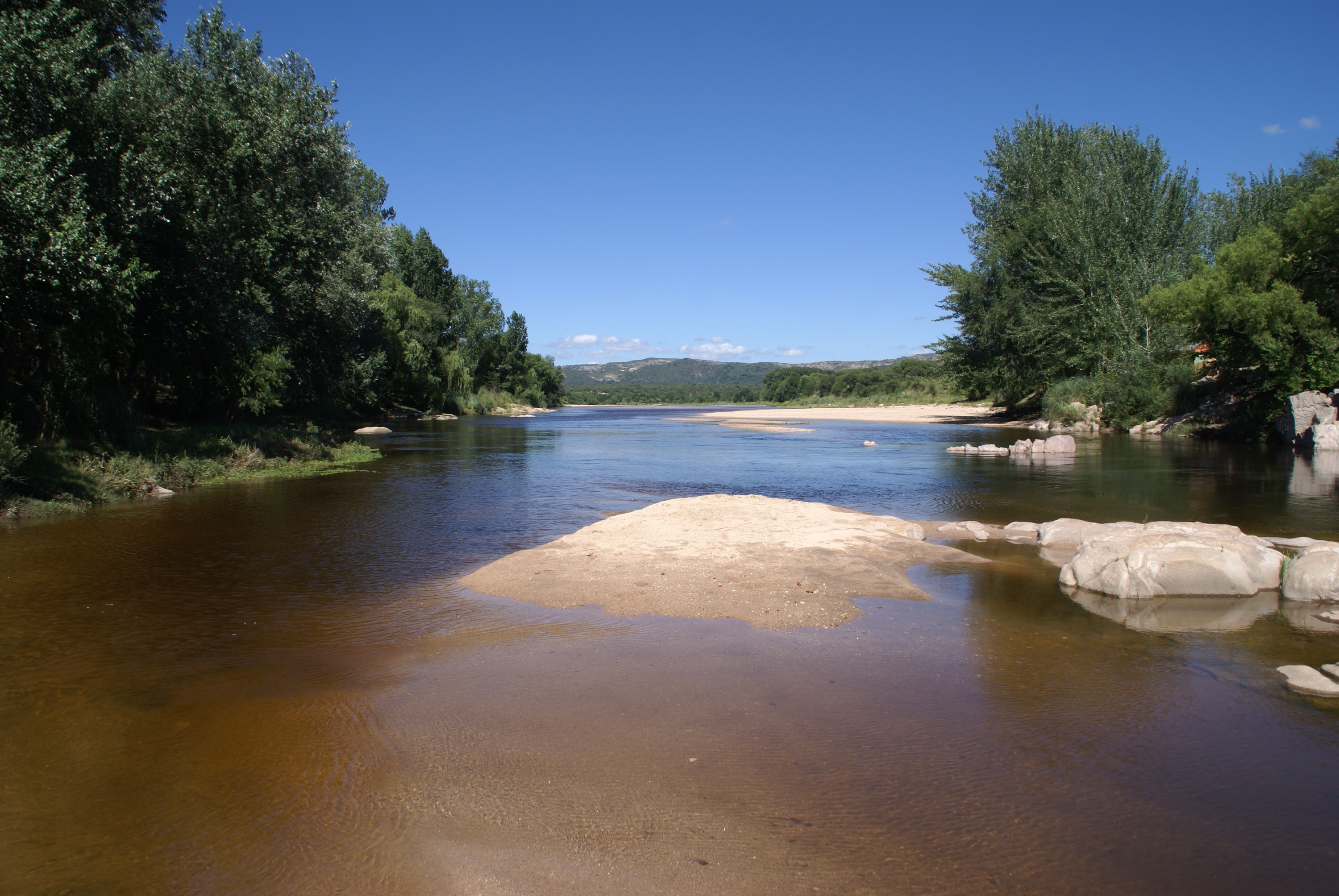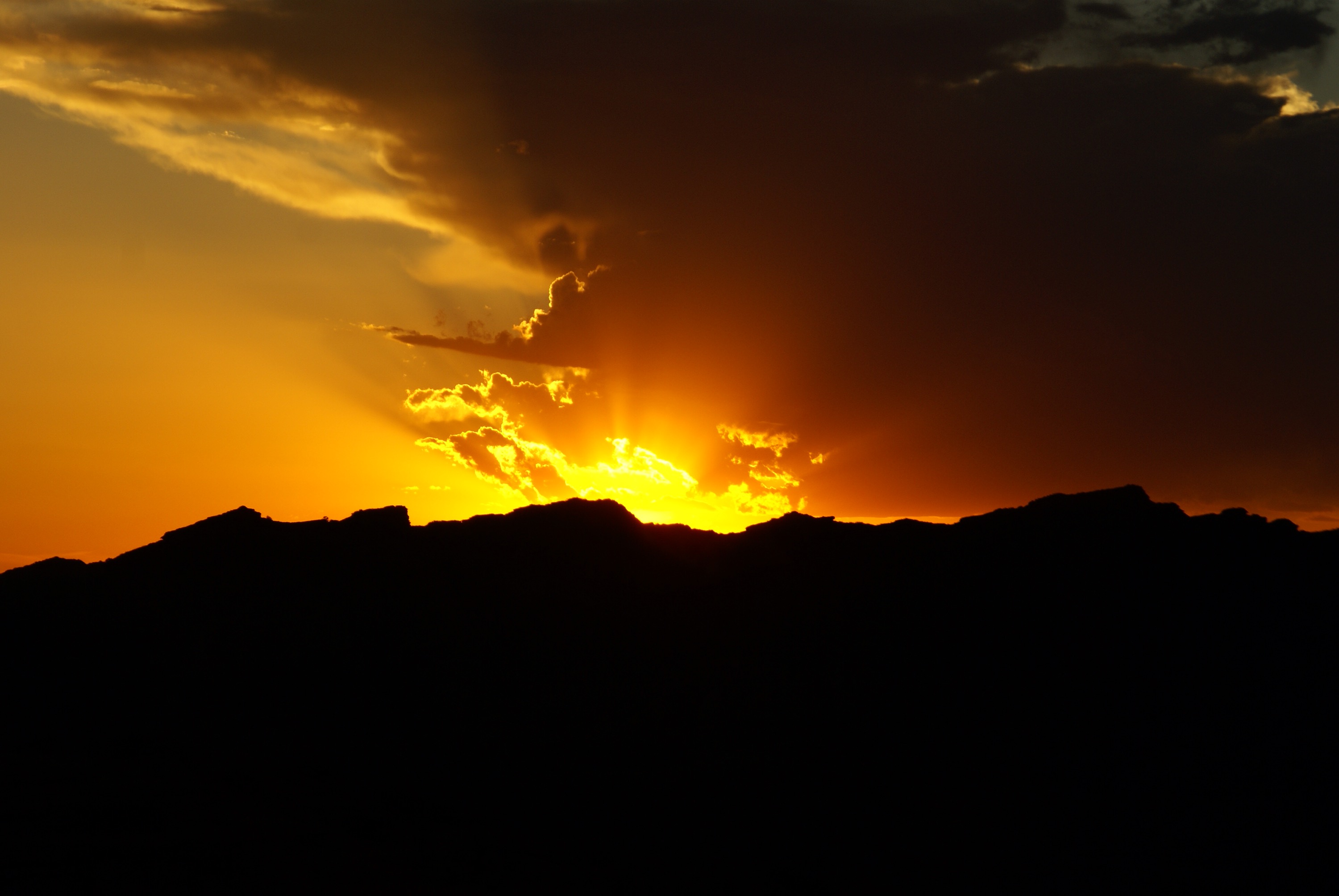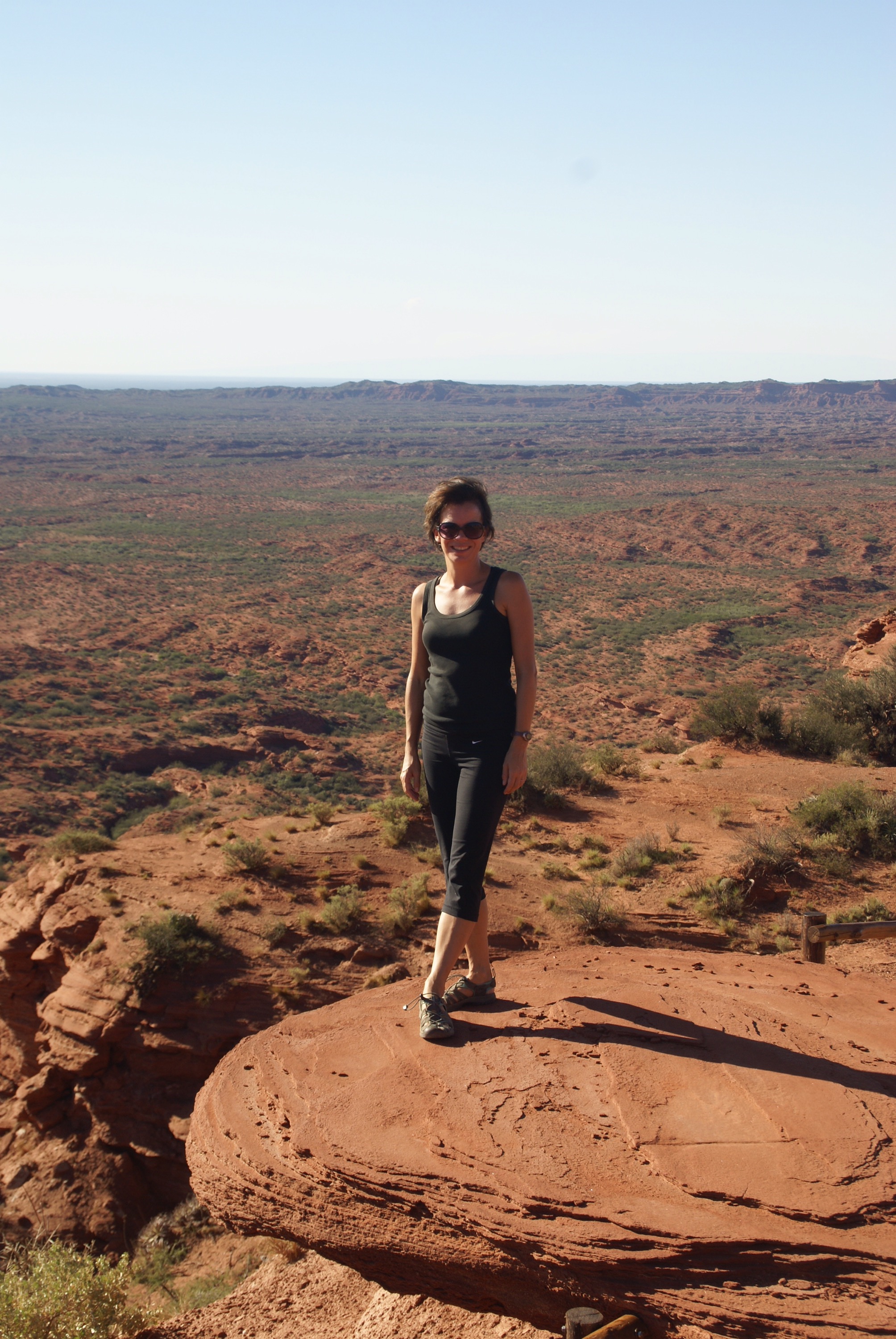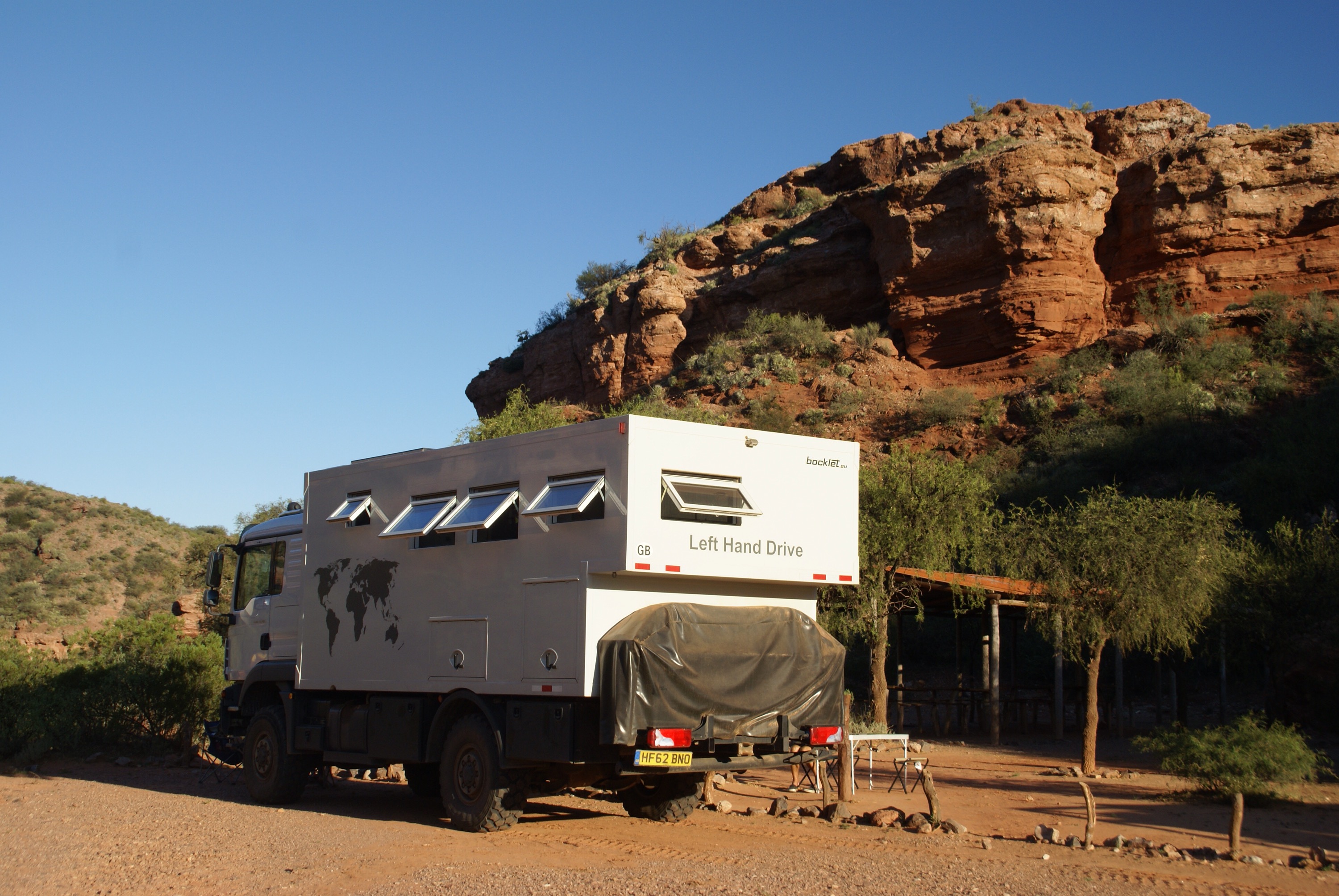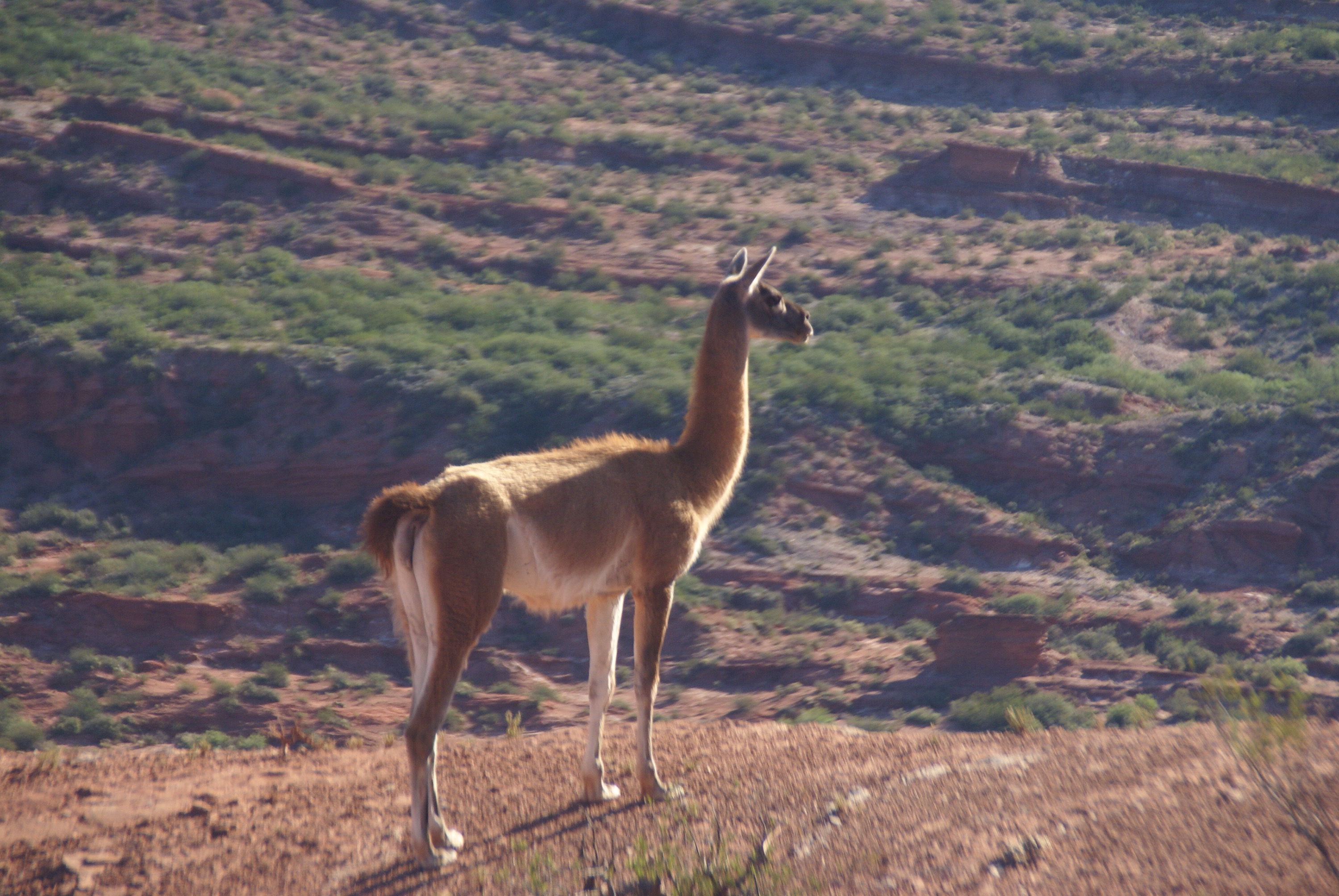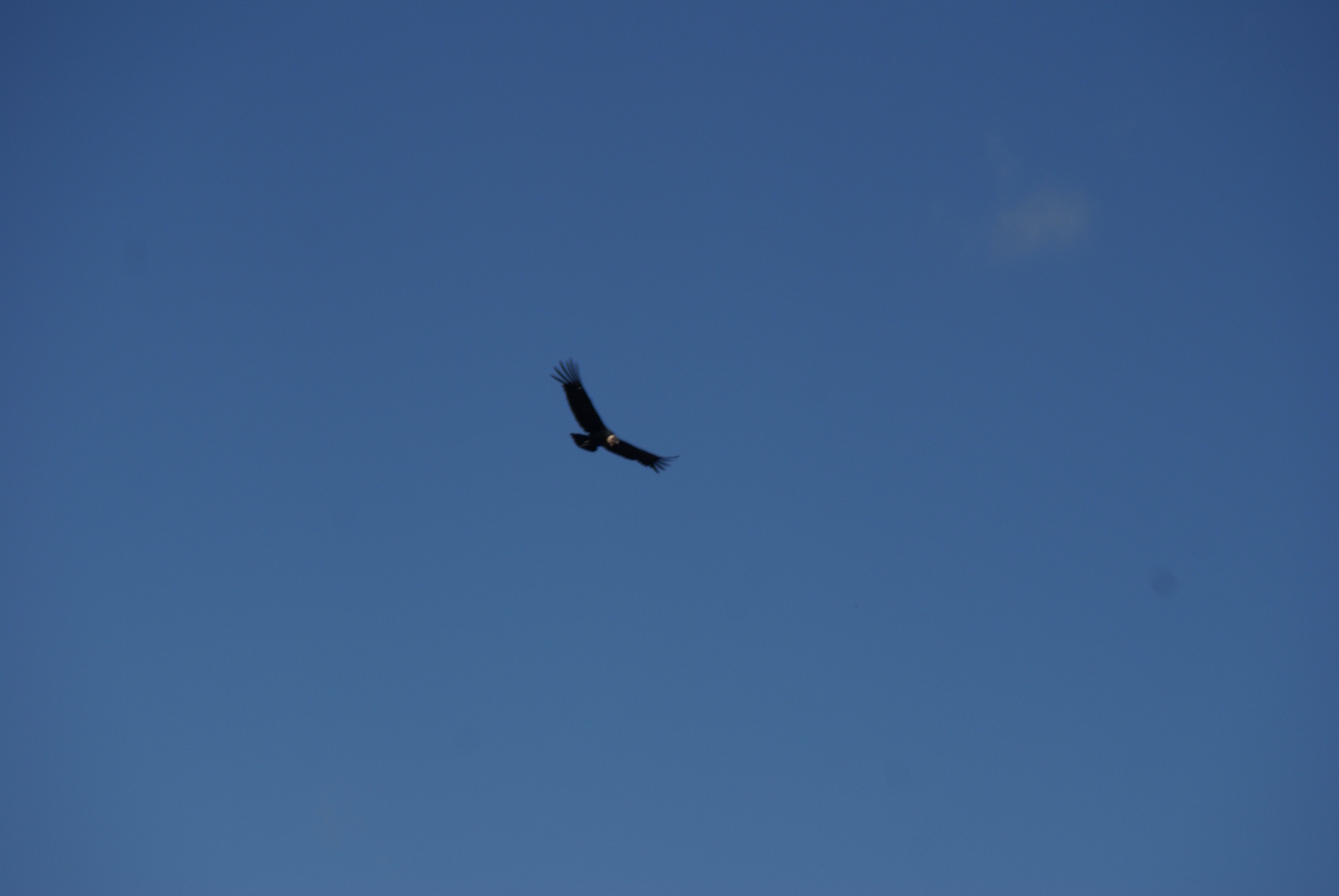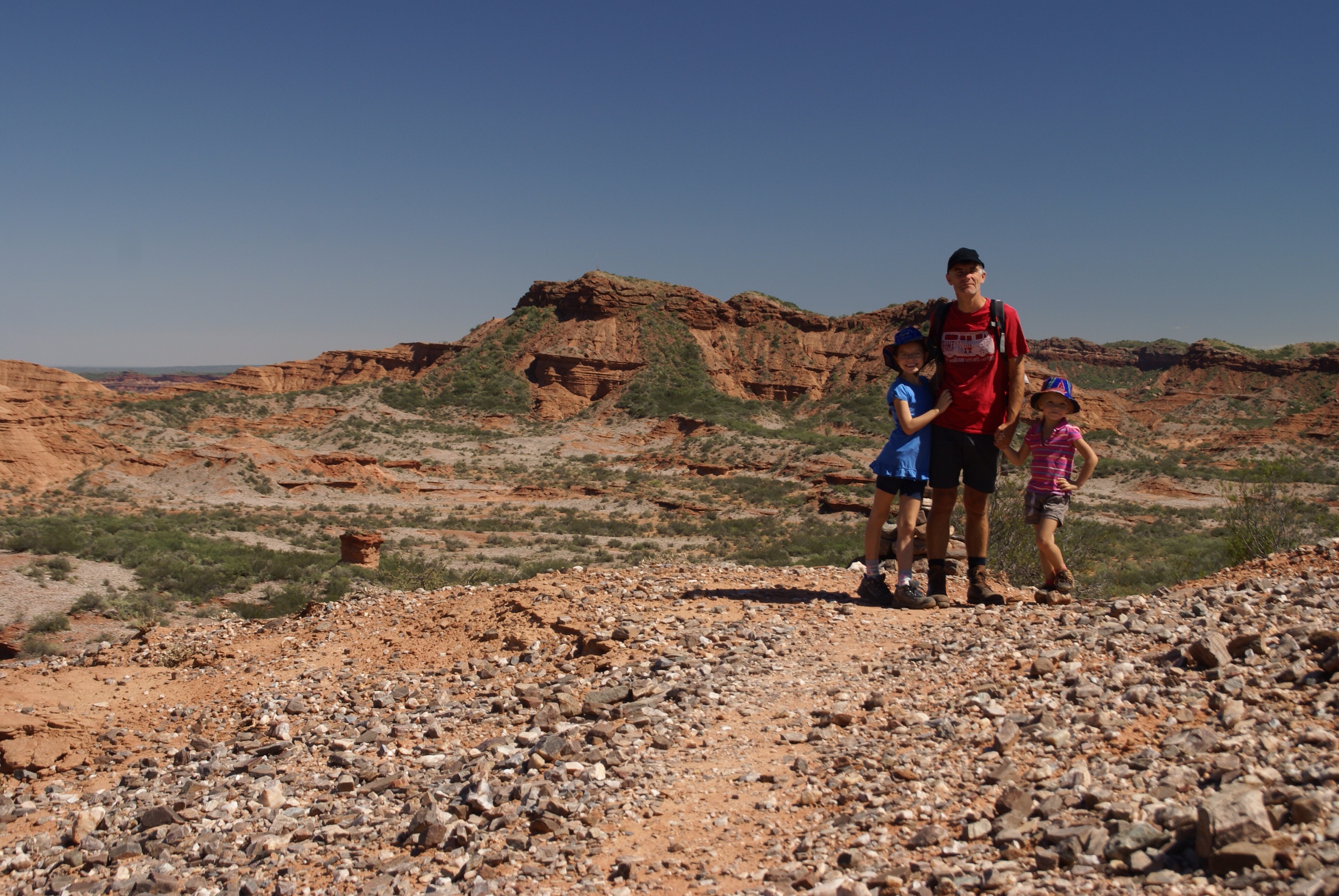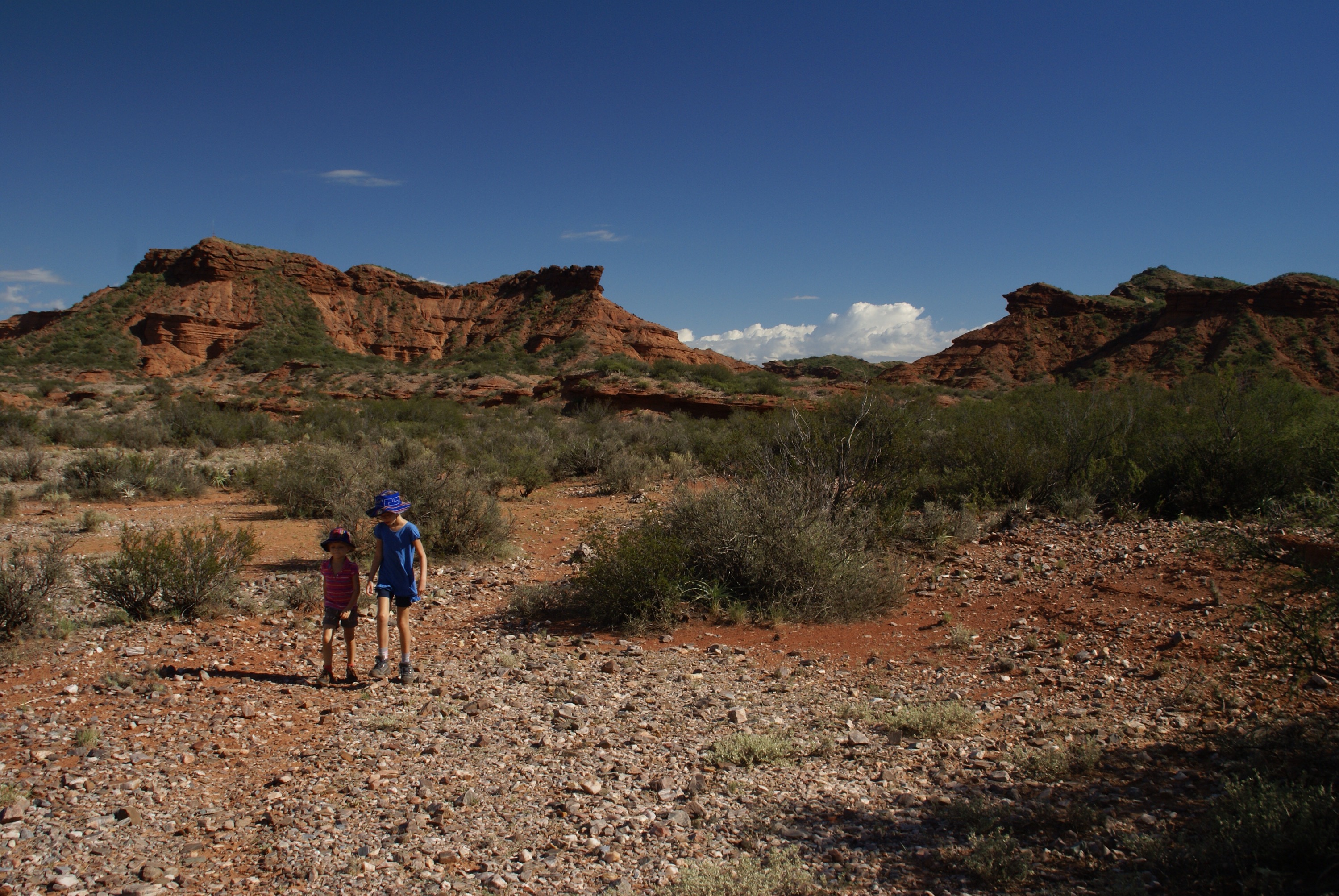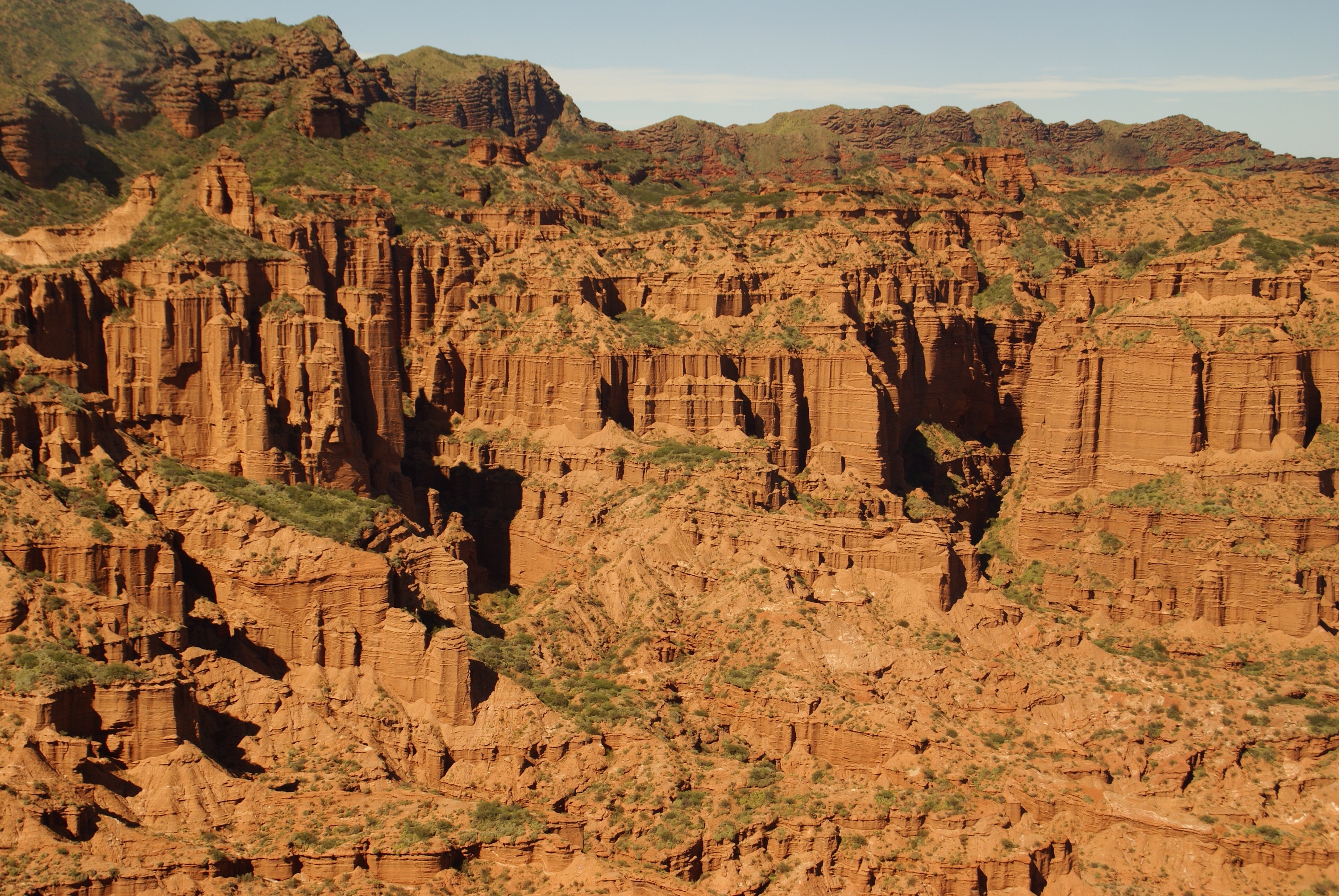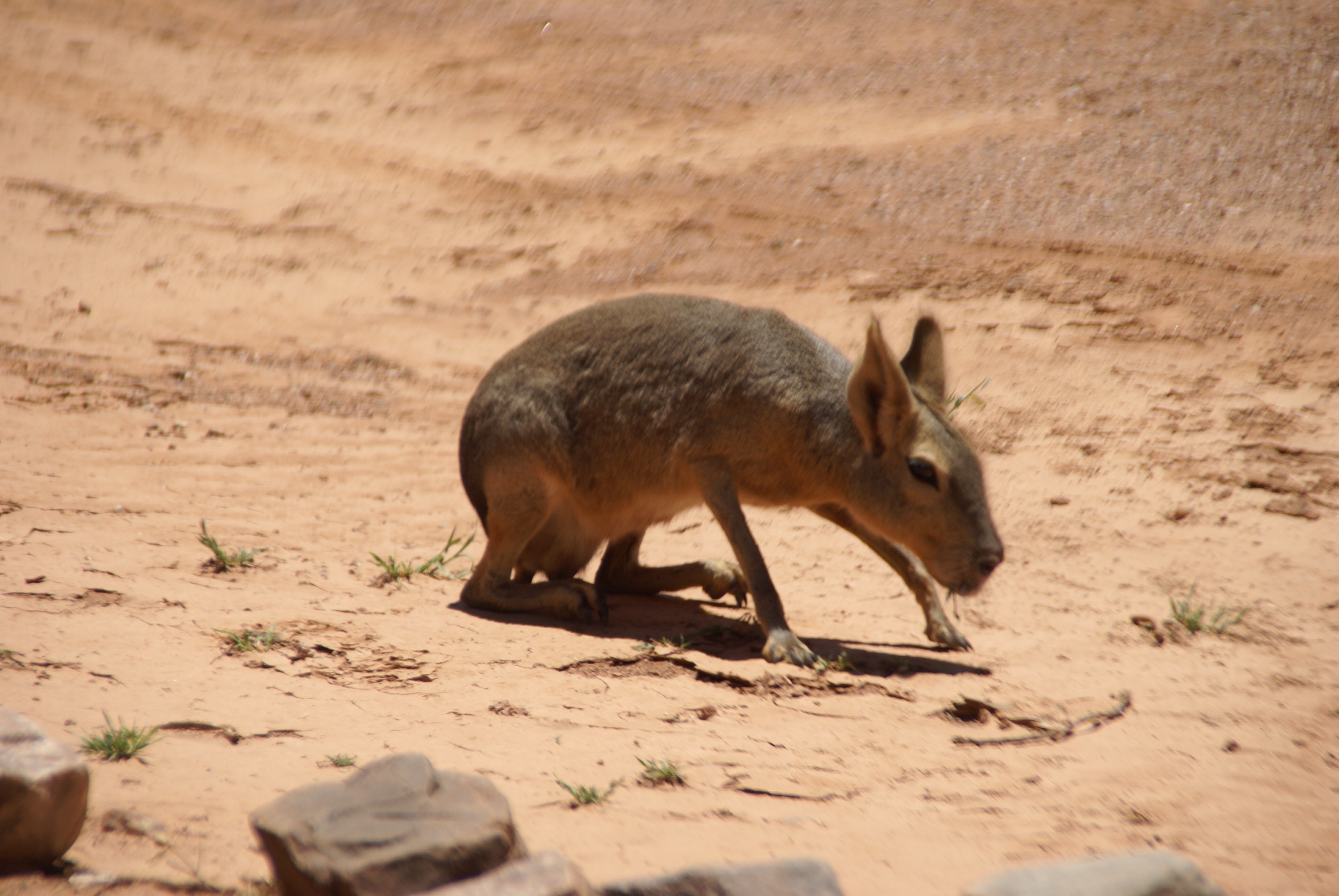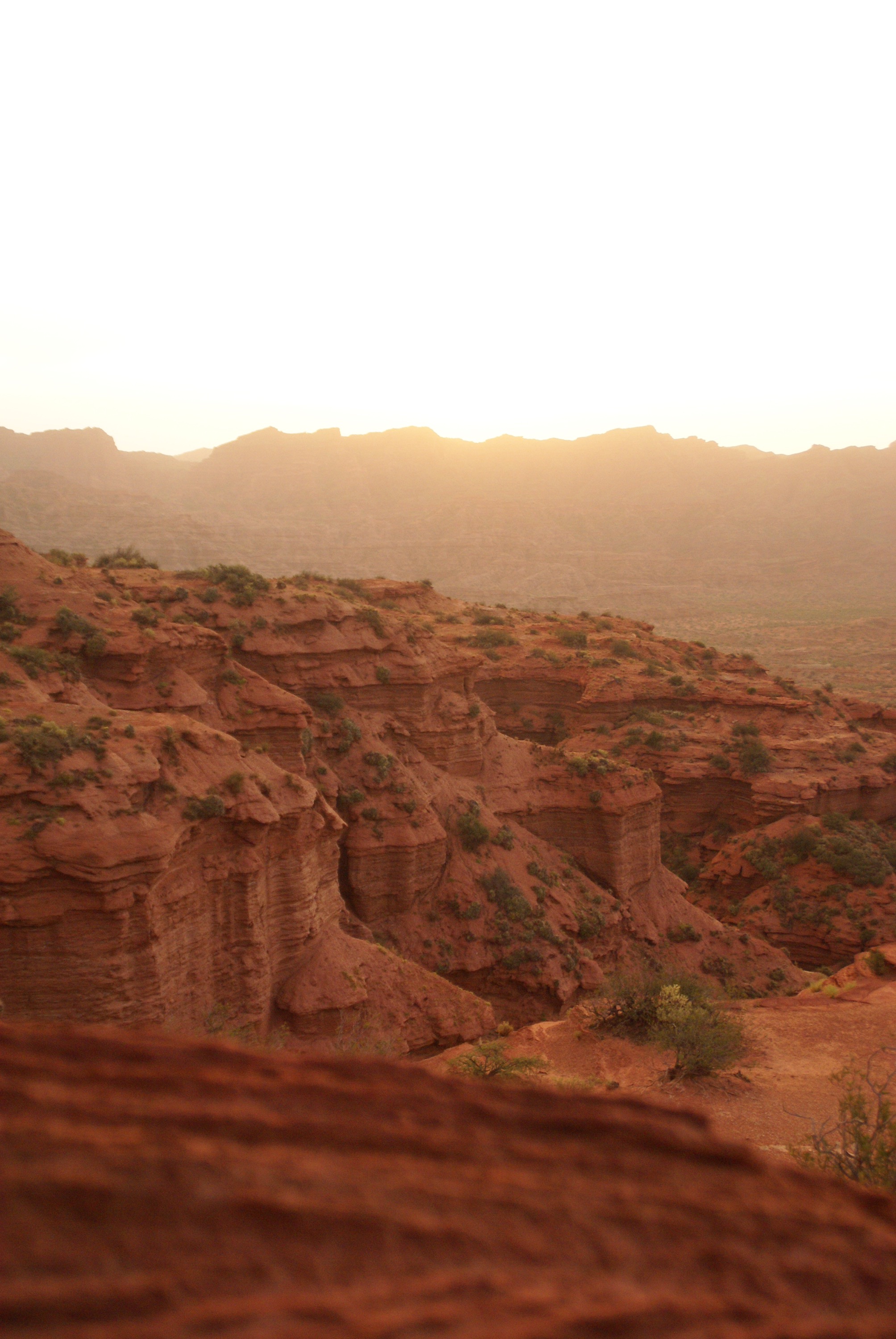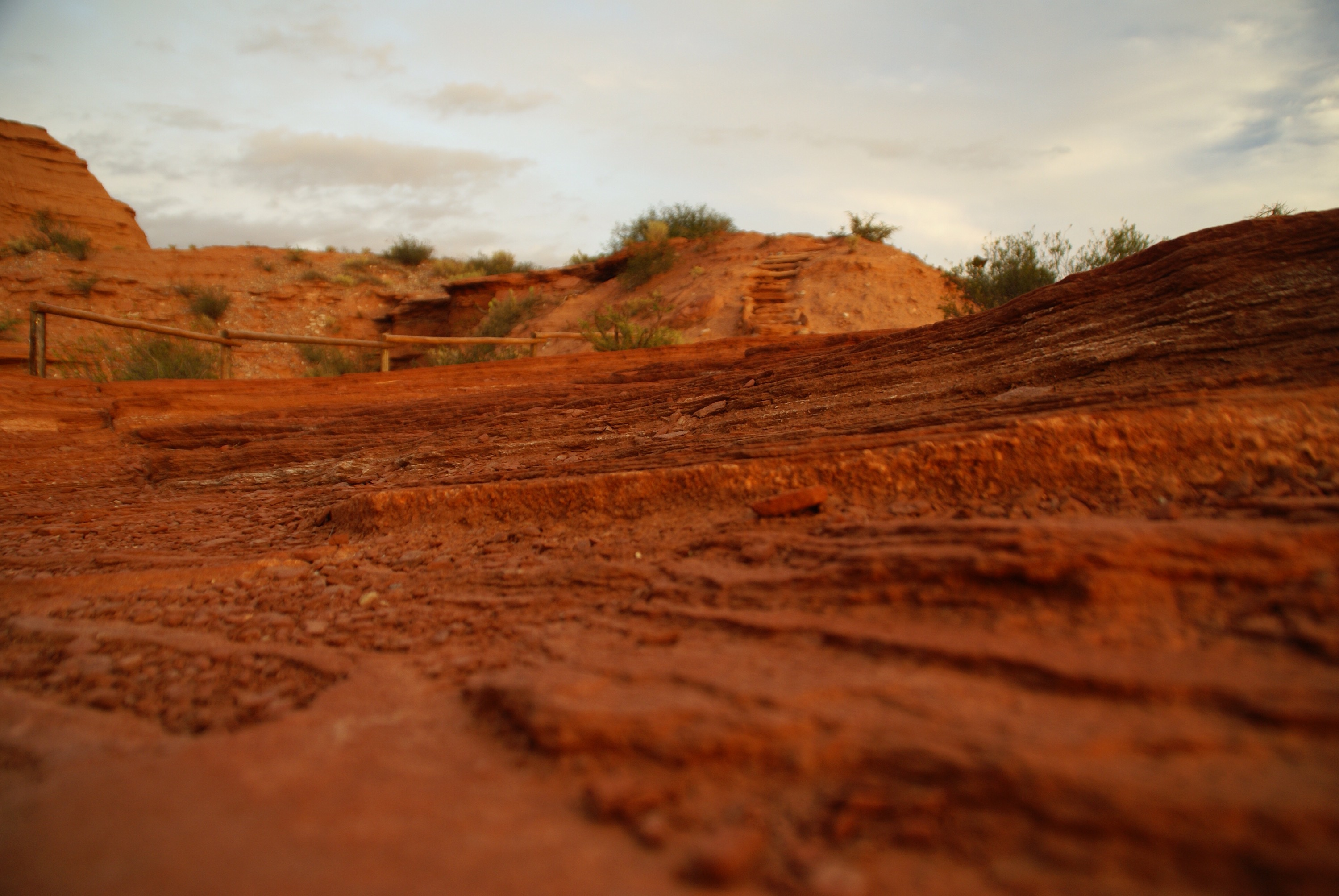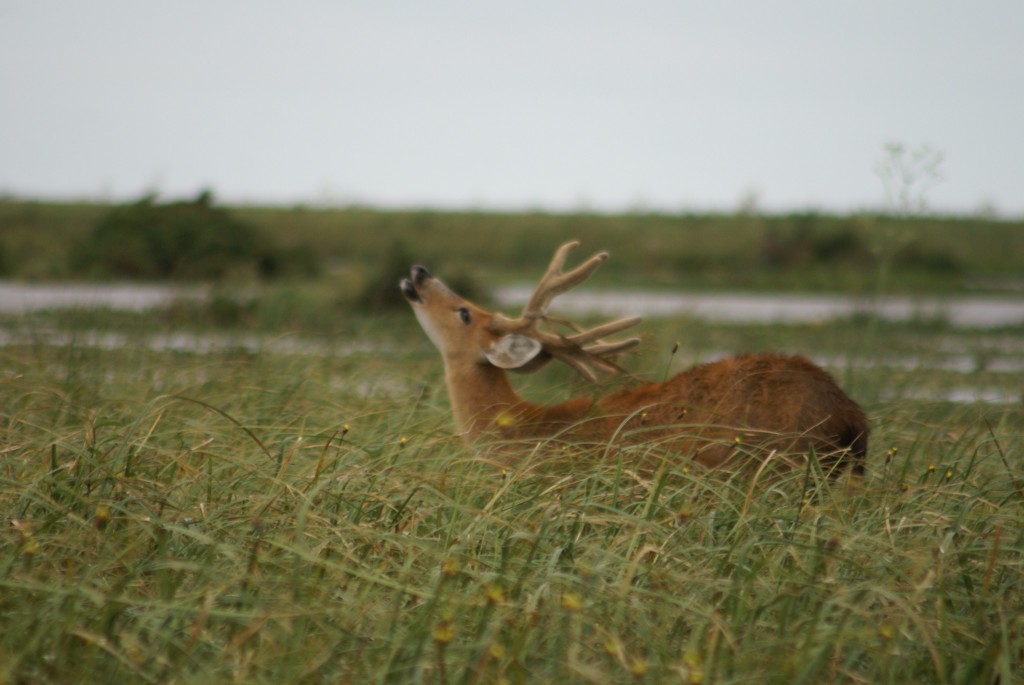
There is a strip of northern Argentina that is wedged between Paraguay and Brazil, it's delineated by water. From the mighty Iguazu river and the falls in the East, the wide snaking Parana River to the West and Wetlands in between. Its scenery is flat, green, agricultural and the sky is huge.
Scattered between the three countries are the historical Jesuit missions. Each founded by just a few brothers they were populated by a couple of thousand of indigenous Guaranas. They started in the early 1600's and continued for about 150 years until the Jesuits were expelled by the Spanish and Portuguese governments. The community worked collectively and shared the proceeds. The Guarana were evangelised, educated and protected from slave traders raids, there were other advantages too like security, better food and prosperity. The brothers were respectful of Guarana culture, spoke their language and the Guarana governed themselves under the Jesuits spiritual authority. Churches and towns were built with beautiful stone work, music and the arts flourished. The prosperity of the communities and the protection from slaving raids annoyed the colonials, that with political wrangling in Europe saw the Jesuits being forcibly removed. The communities were attacked and the beautiful churches and towns were destroyed, the people then disbanded. We'd visited two in Paraguay and were keen to see them in Argentina. They were just as beautiful ruins with the elegantly carved sandstone edifices.
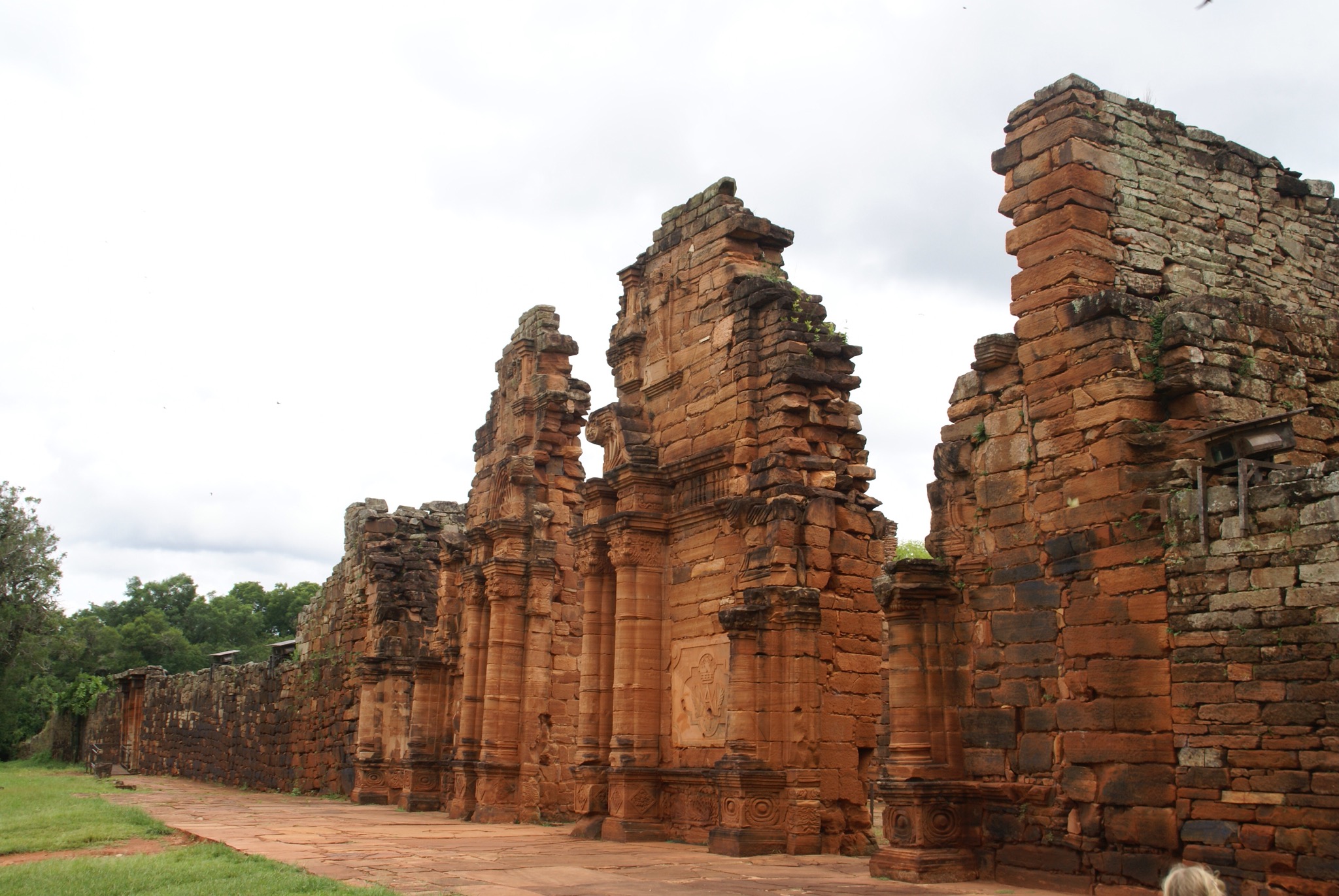
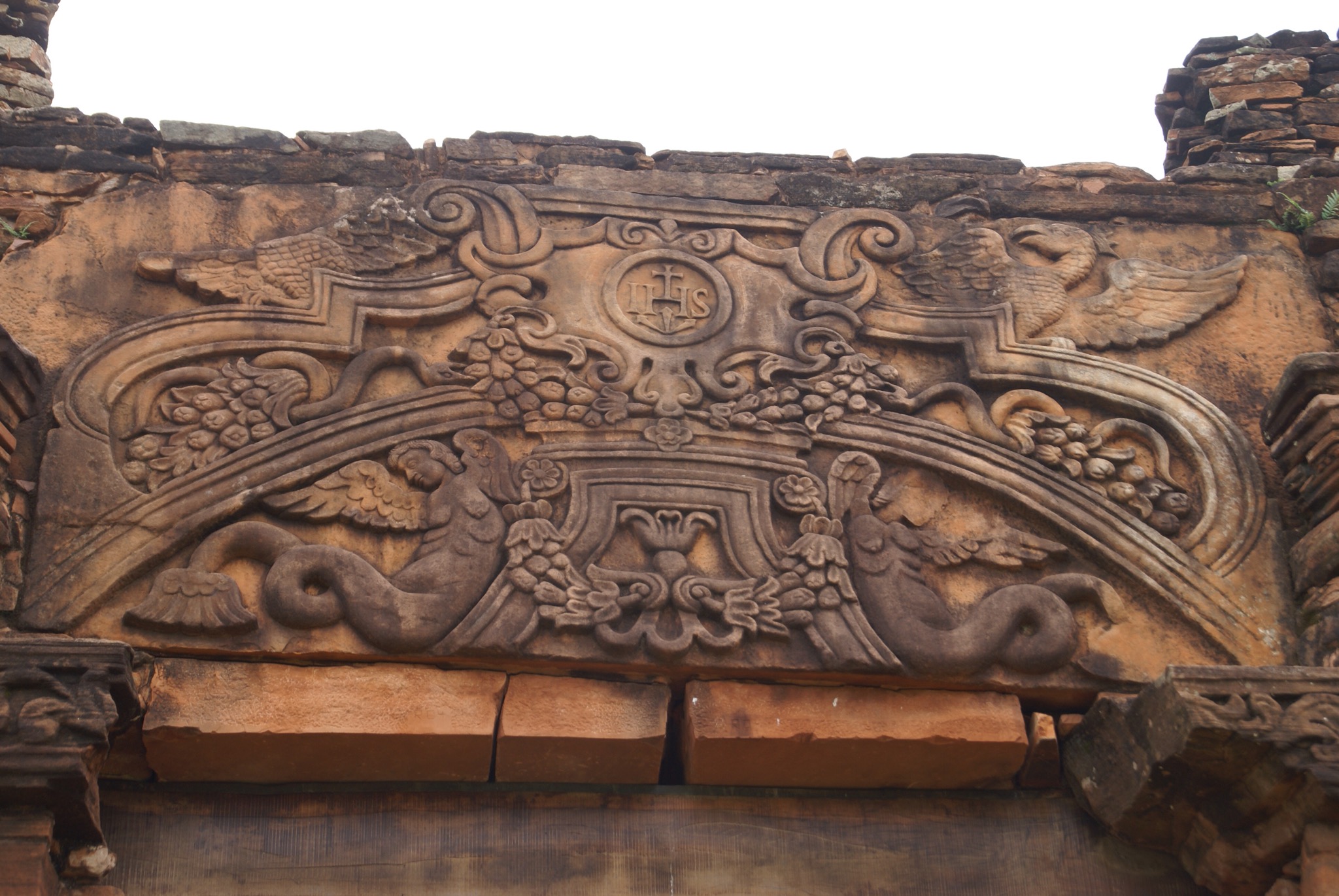

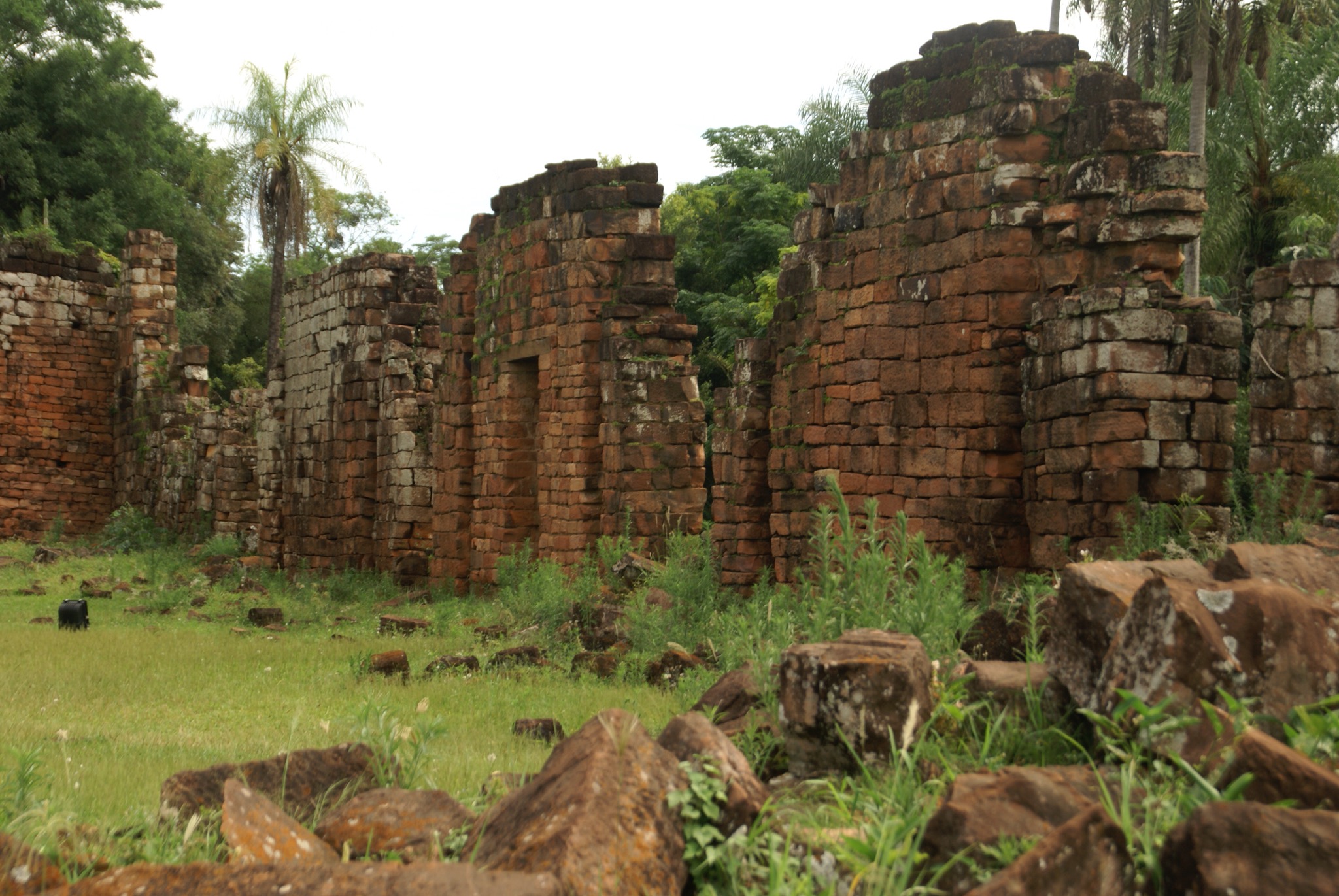
The Ibera wetlands are far away from any town, coming from the north the wide sandy road passed huge field after huge field, occasionally broken up by a track up to an estancia (farm). The only other people we saw was several gauchos (Argentinian cowboys) driving their cattle along the track with their distinctive oversized, floppy berets and baggy trousers. On the edge of the Reserve in the small sleepy village of Colonia Pellegrini we found one of the most beautiful campsites we've seen. Overlooking the lake with little cooking cabanas, beautifully maintained with boats going out into the reserve, it was perfect. The only downside was their 3m tall entrance gate, so we couldn't actually get in. Not to be defeated we parked just outside the gate and used the nearest cabana. We also got the tent out for the girls to sleep in, something they've wanted to do for ages. So Steve and I each got a night by ourselves in the truck, while the other bunked down between the giggling girls. Around the campsite the wildlife was pretty relaxed too with capybaras grazing amongst the tents.
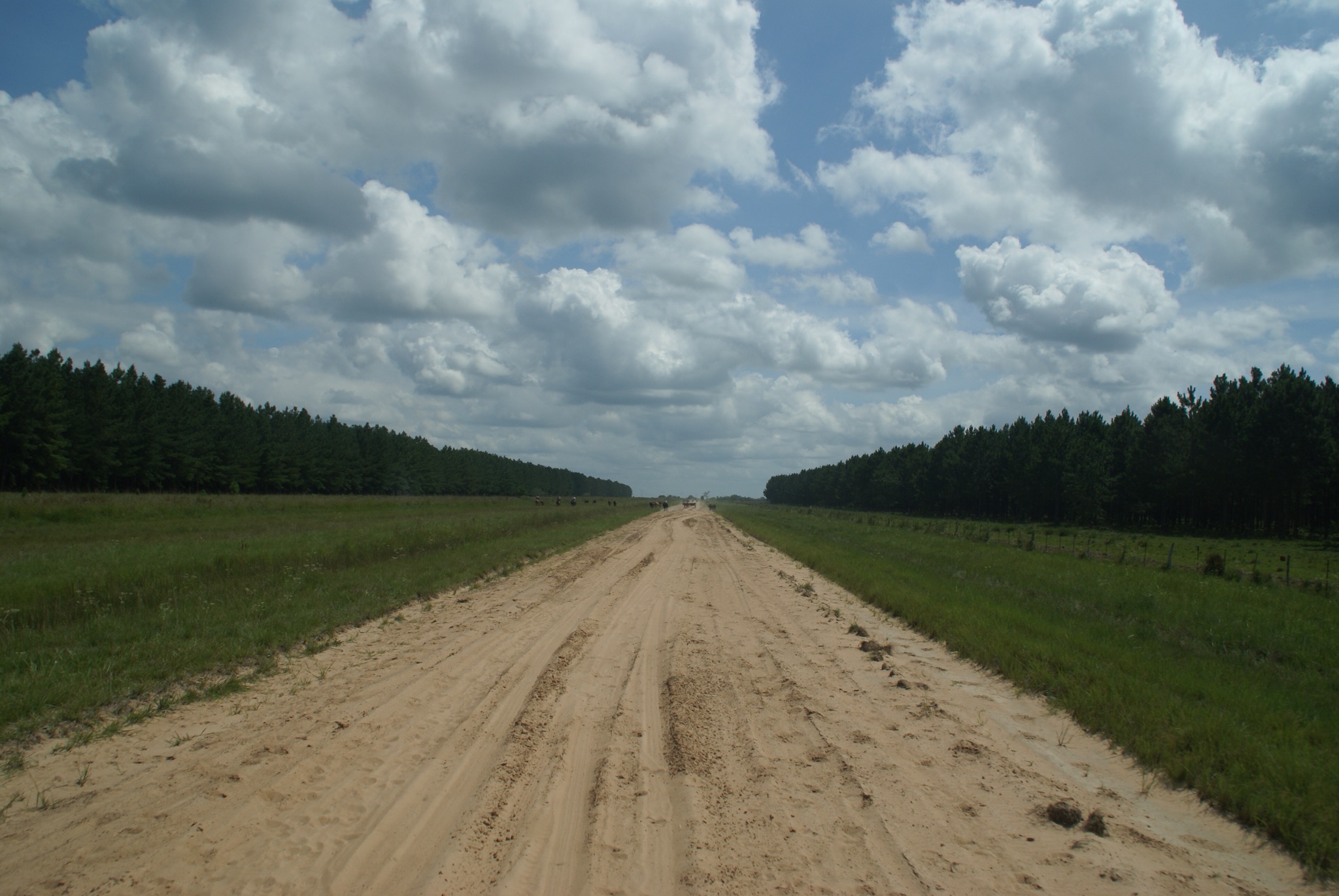
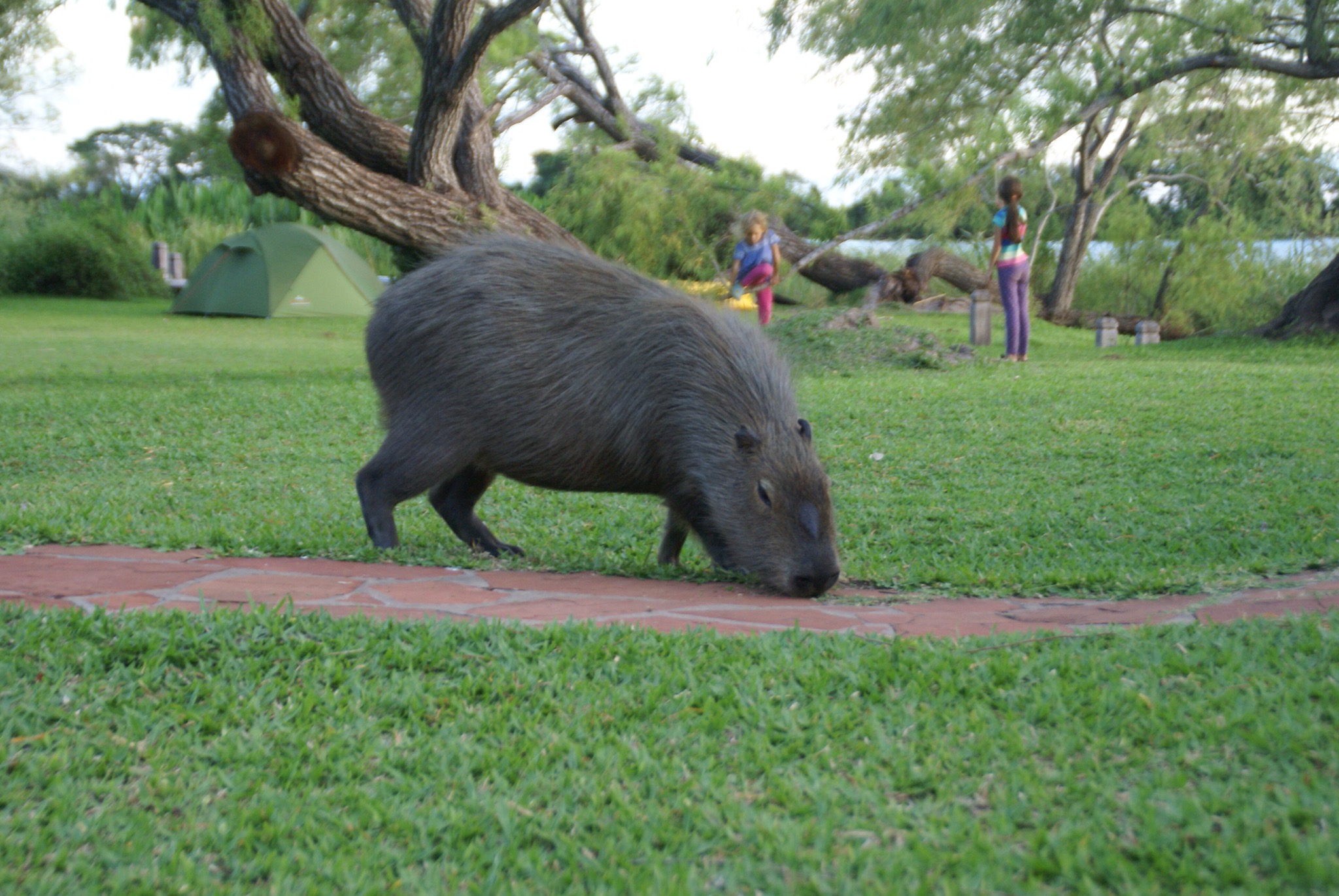

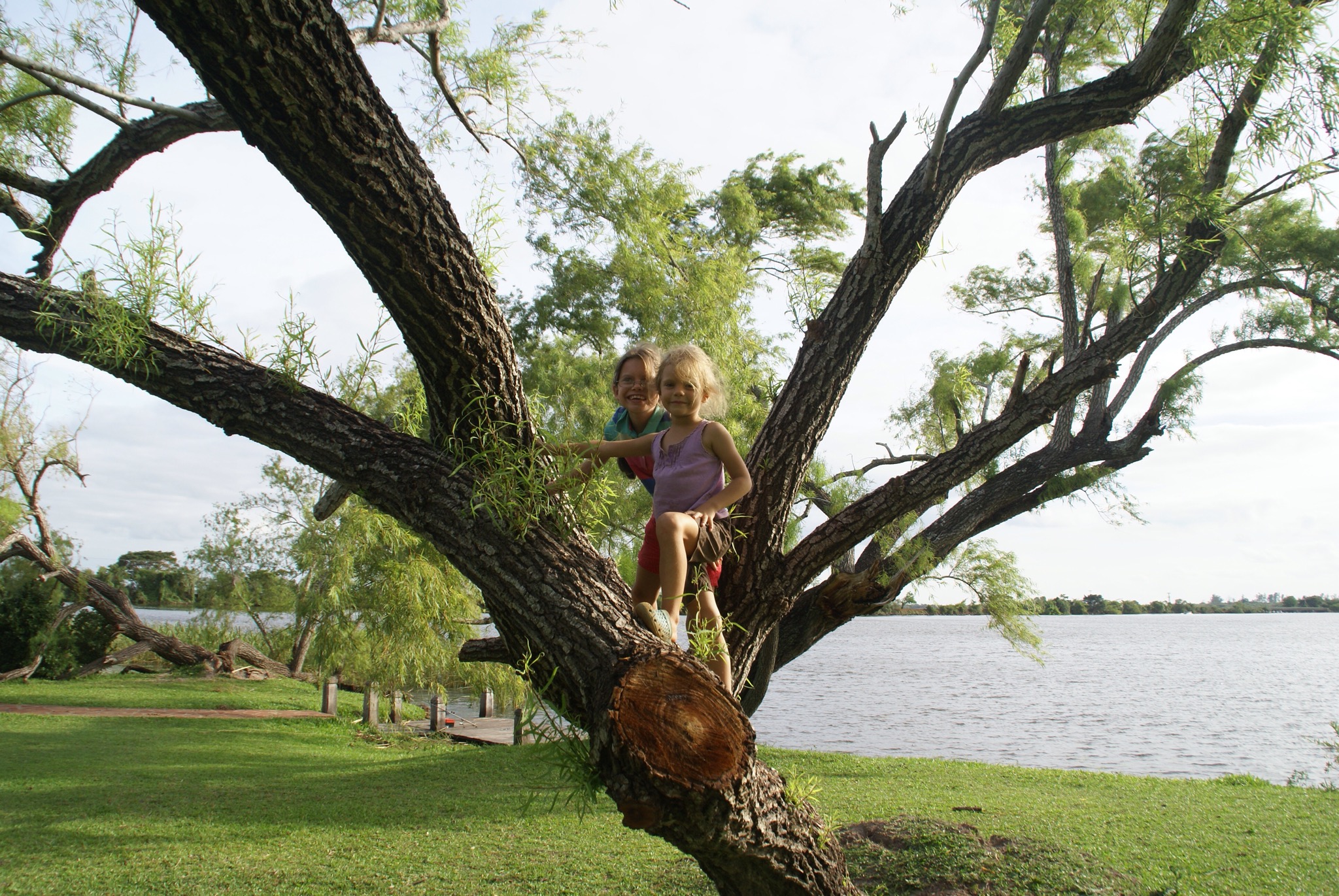
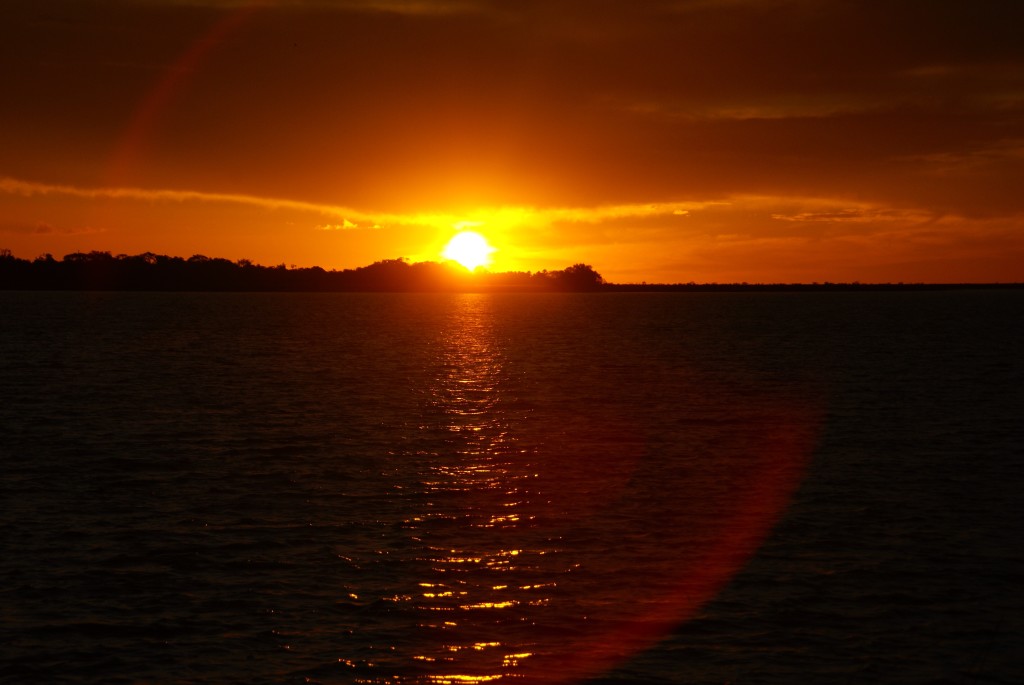
There was great wildlife spotting the next morning from a small boat: caimans, marsh deers with huge antlers, capybaras and loads of birds.
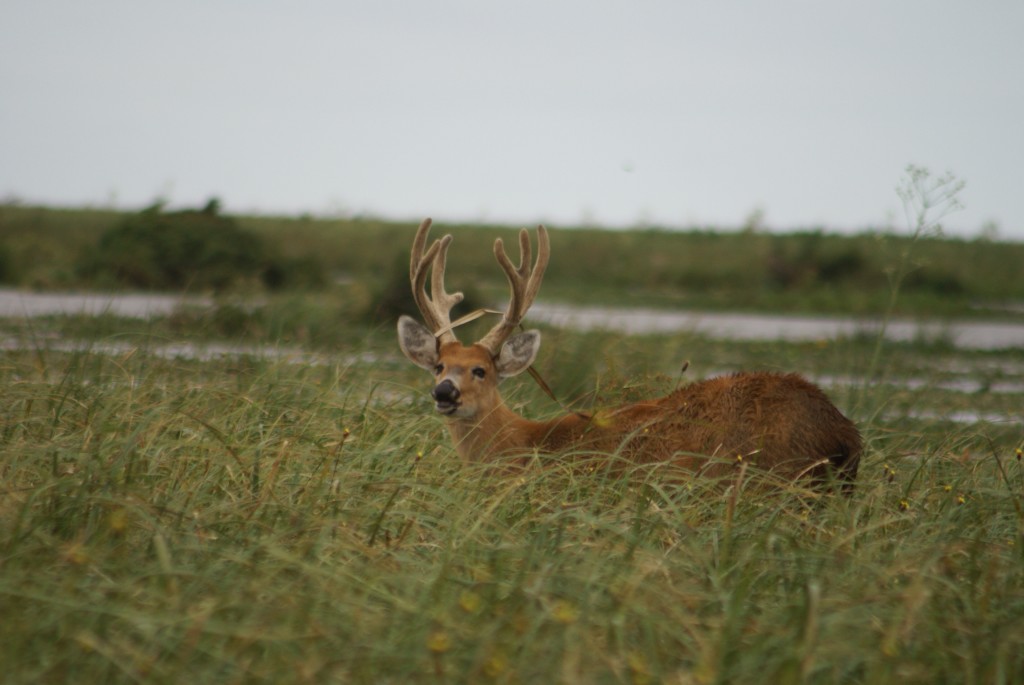
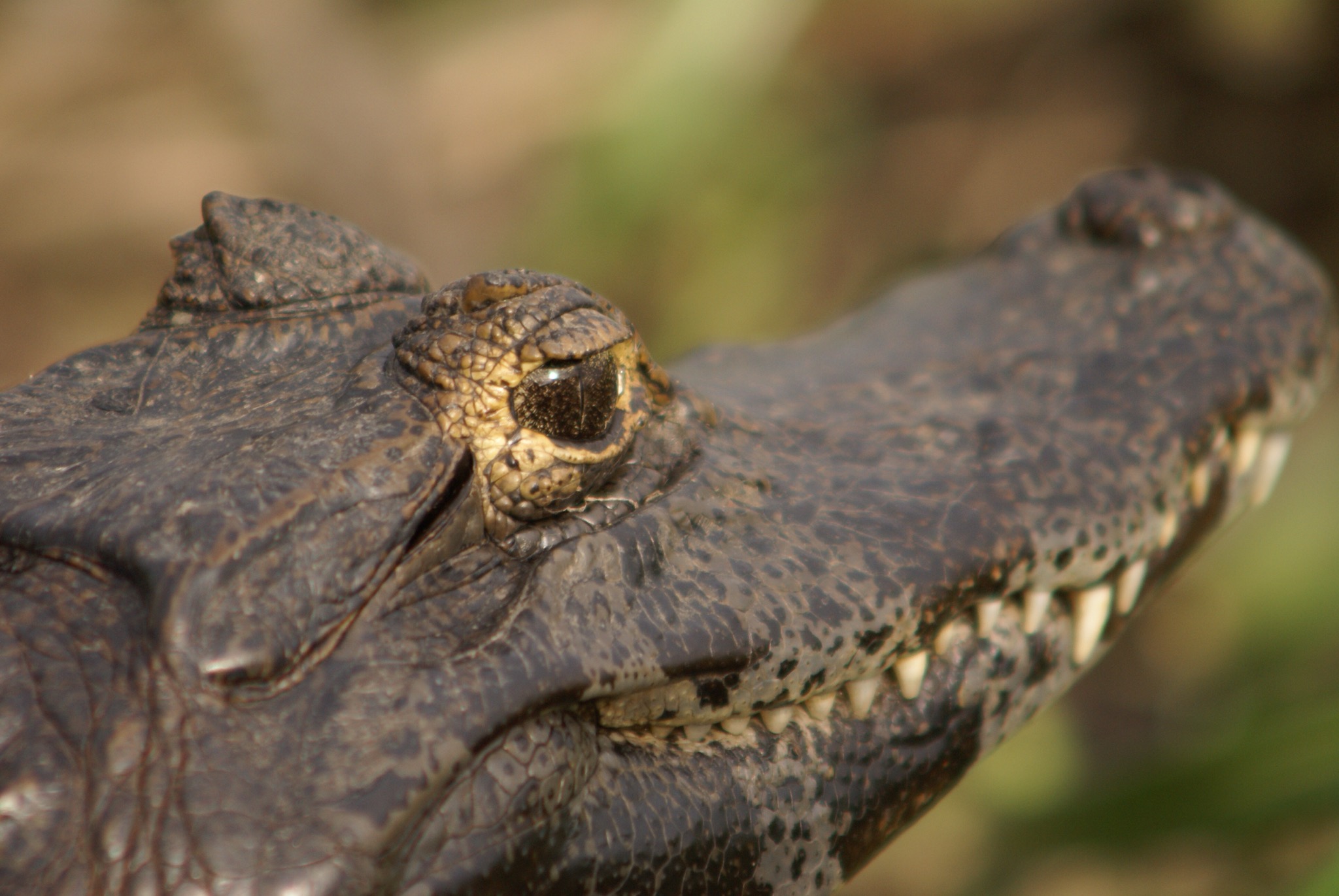
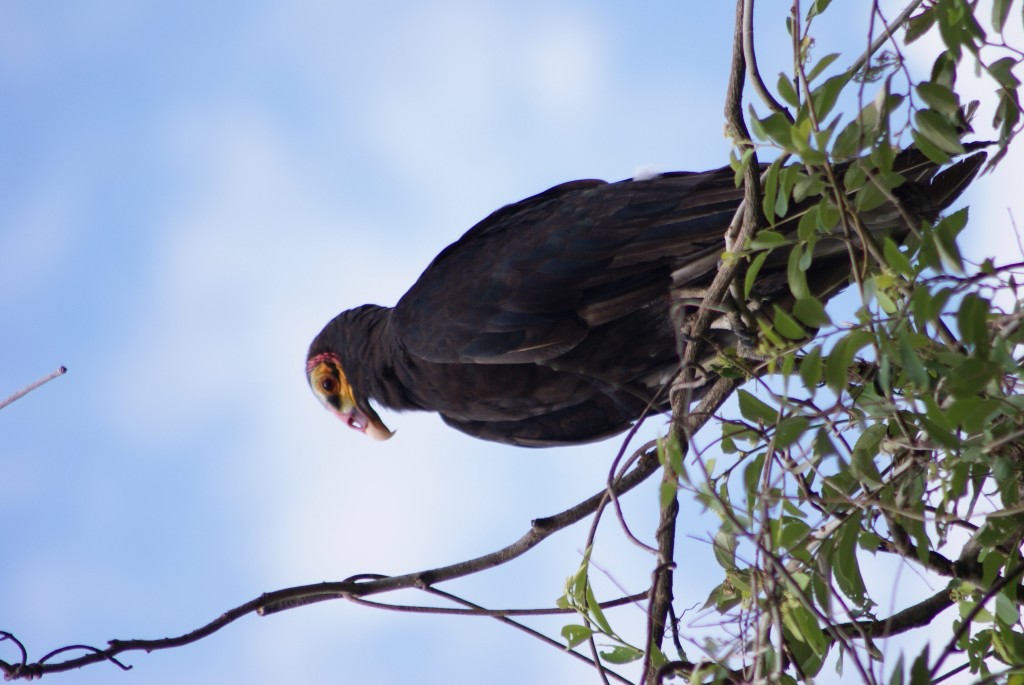
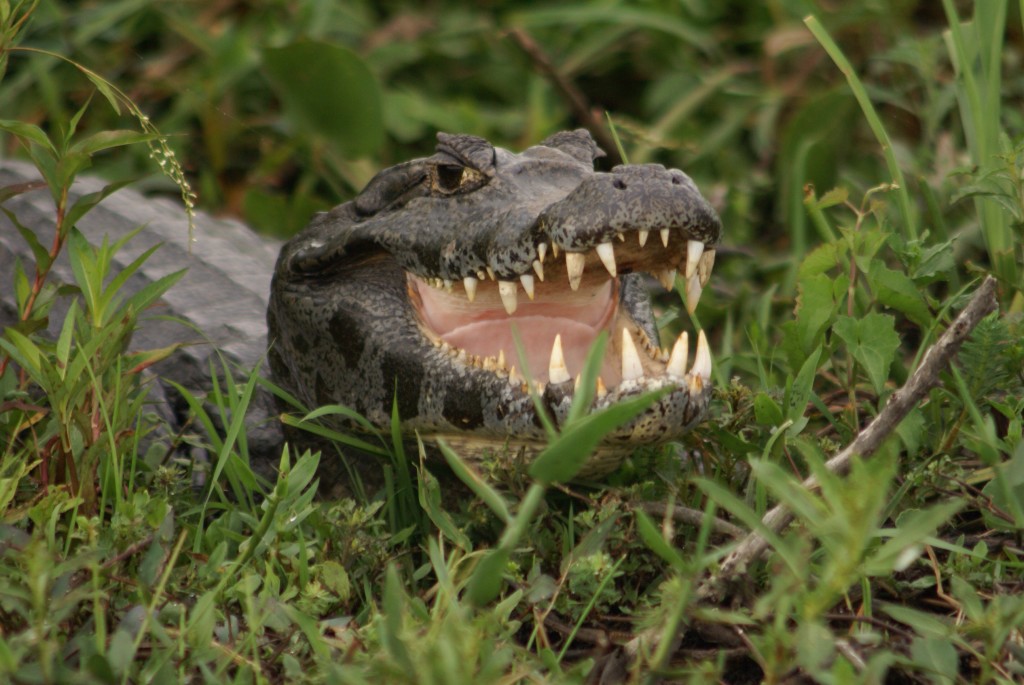
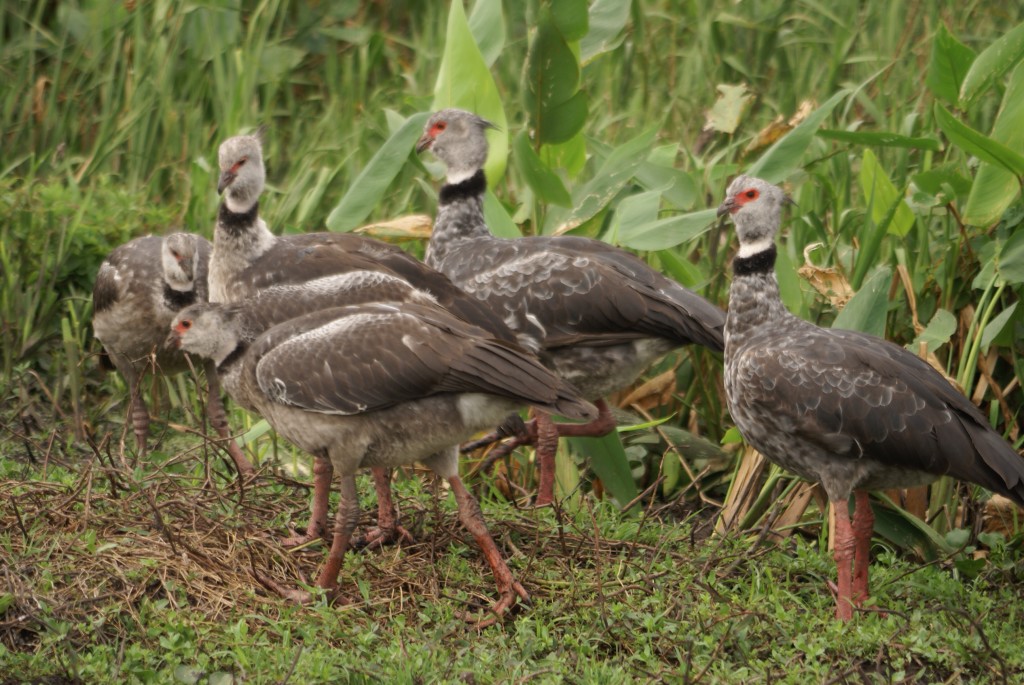
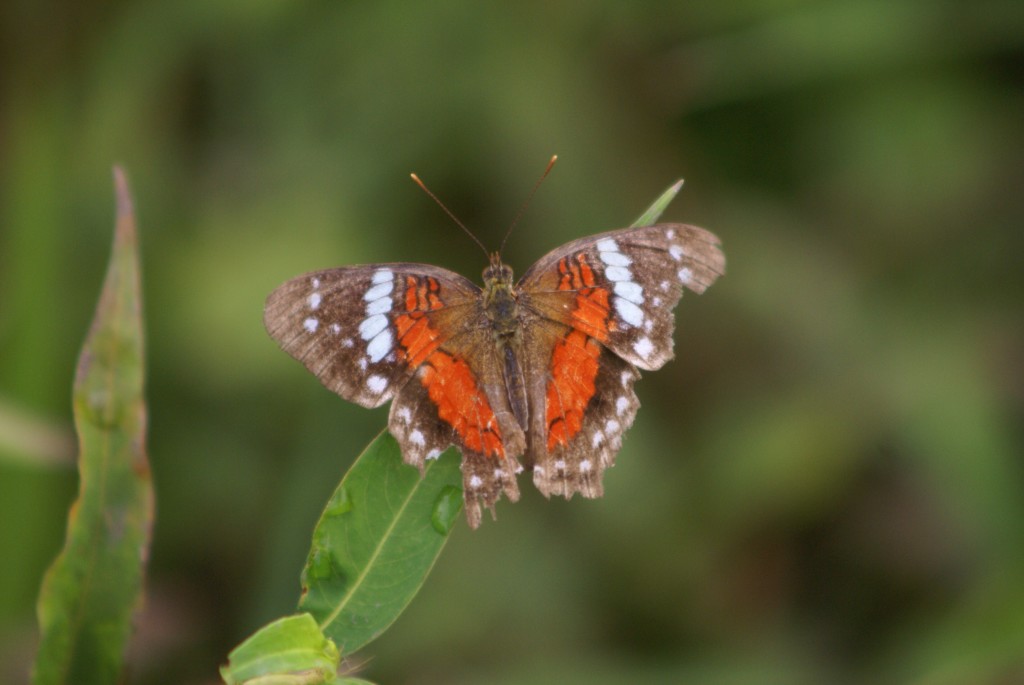
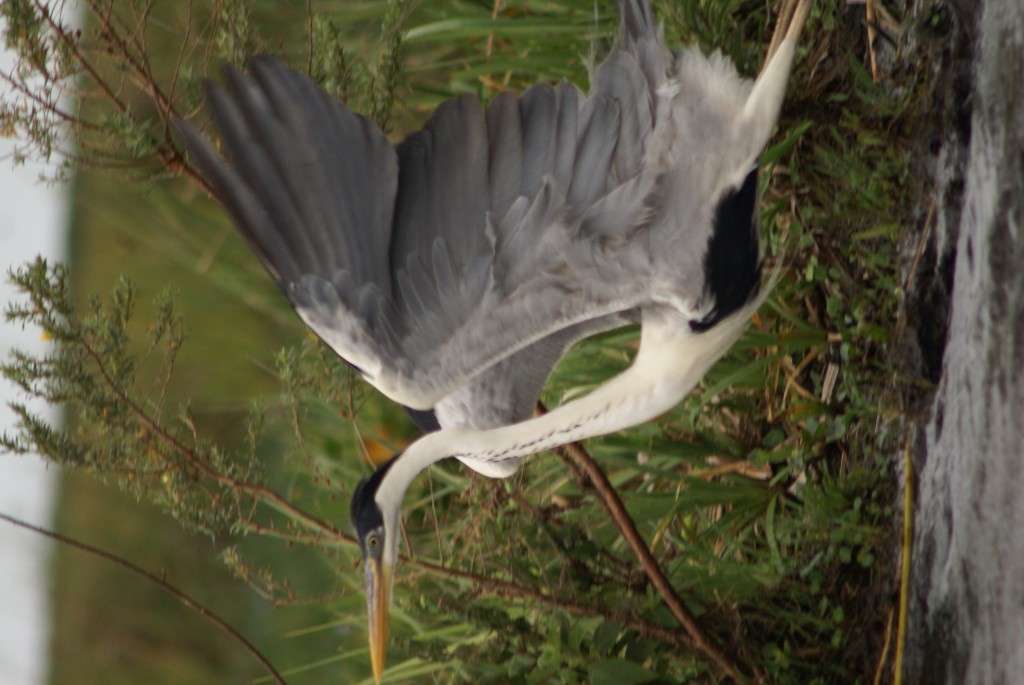
The following day on the drive out the wildlife spotting was almost as good with deer, birds, capybaras and a family of foxes on the gravel road.
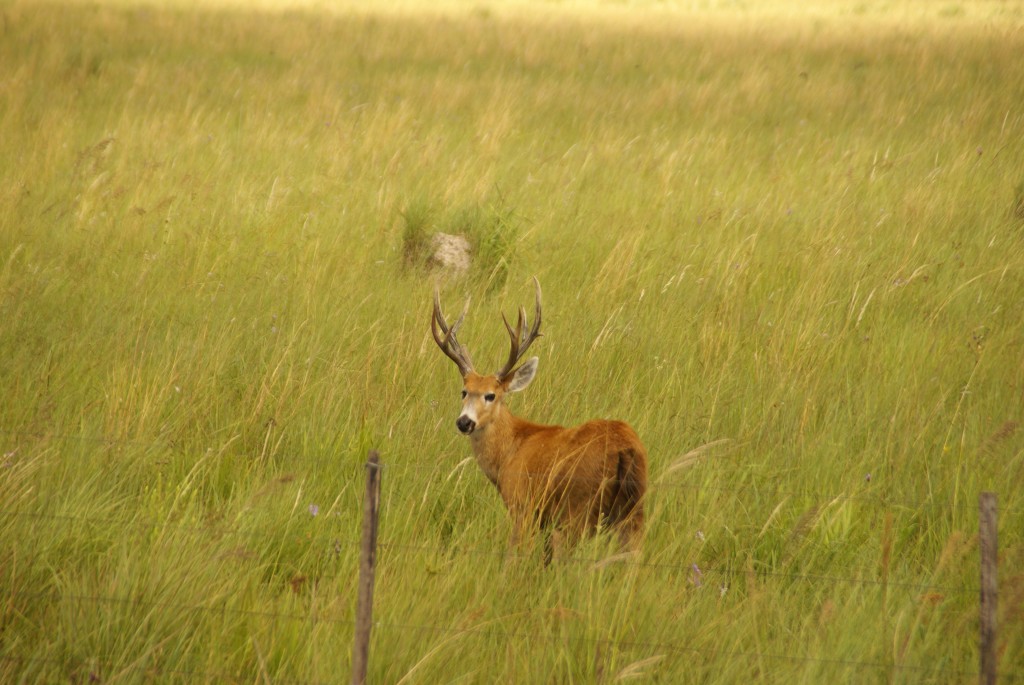
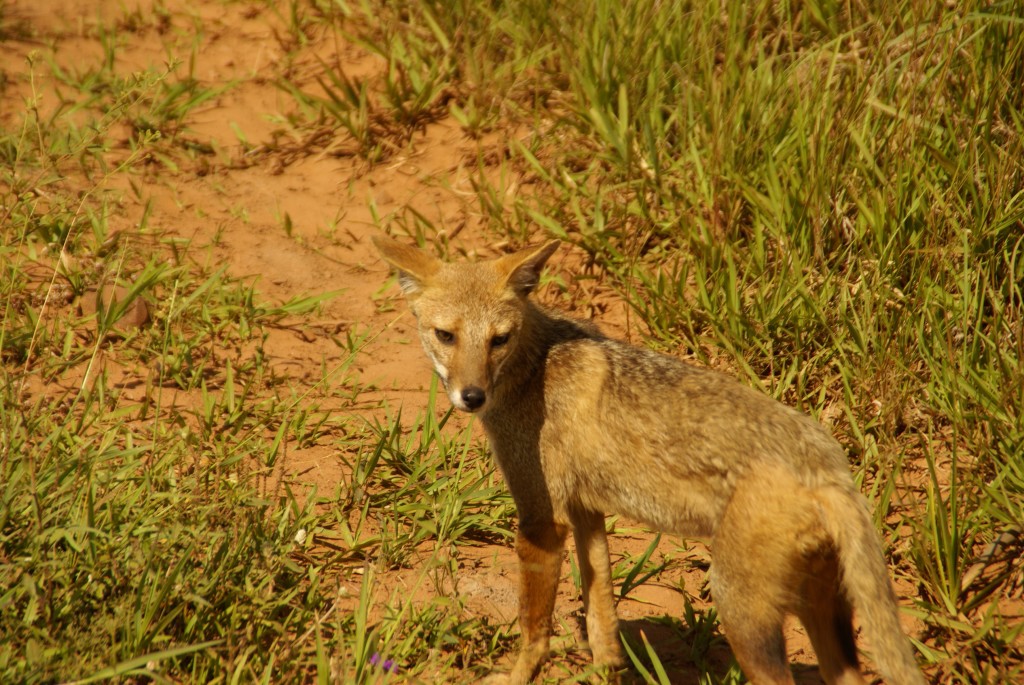
We broke up the long two day drive south east to Cordoba at a municipal campsite on the Parana river. Being a warm Saturday evening it was packed full of families, groups of friends and couples just warming up after their afternoon siesta. It was all very friendly and convivial on the banks of the river as we watched the sun go down. We are not very attuned to the Argentine day though, just as we were thinking about retiring for the night after our long day on the road, our neighbours were firing up their grills. Thankfully it wasn't too noisy or maybe we are just getting better at sleeping through loud music.
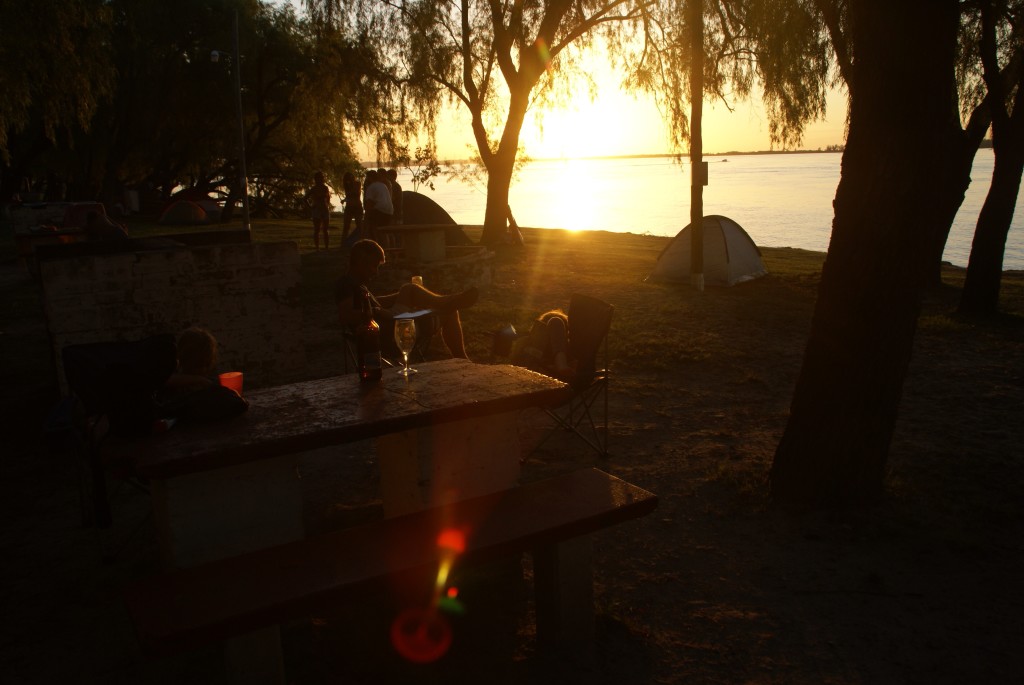
Steve enjoying the sunset and having a well deserved rest after driving all day.
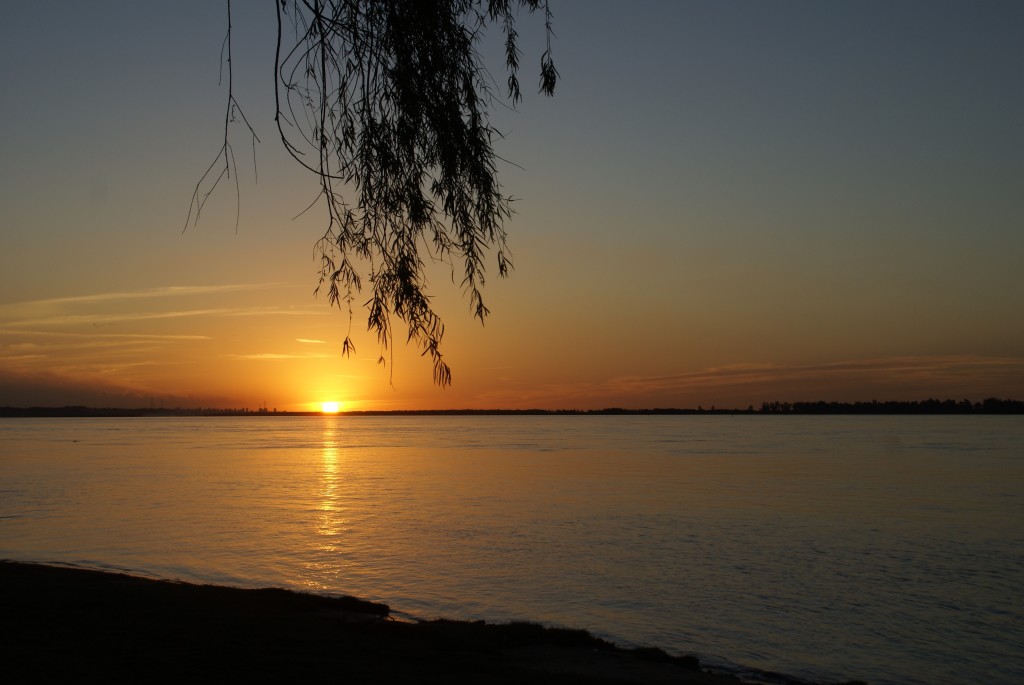
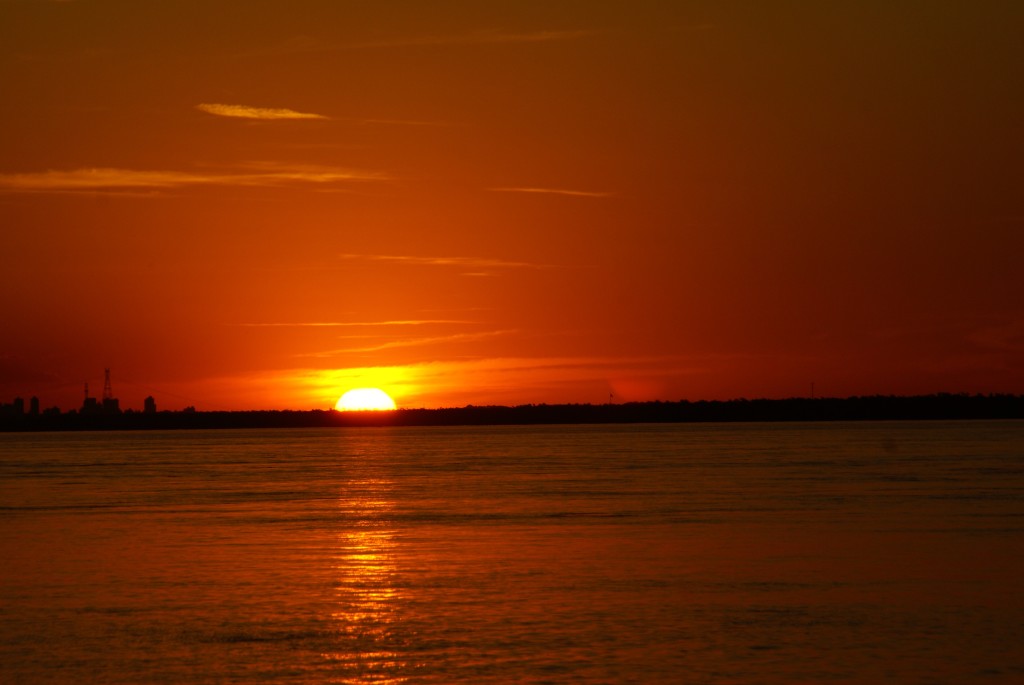
When we arrived at the Cordoba municipal campsite early on Sunday evening, there was a similar scene with groups of families relaxing, eating, playing football and listening to music. Competing musical tastes ranged from heavy metal to accordion music but the best was the heart achingly, beautiful, traditional Argentinian folk songs sung by one of the group at the neighbouring grill. I wasn't the only one in awe of his talent as rounds of applause from his friends could be heard whenever he finished a song. The crowds melted away as it got dark and it was just us and a friendly German overlanding family left, enjoying a beer.
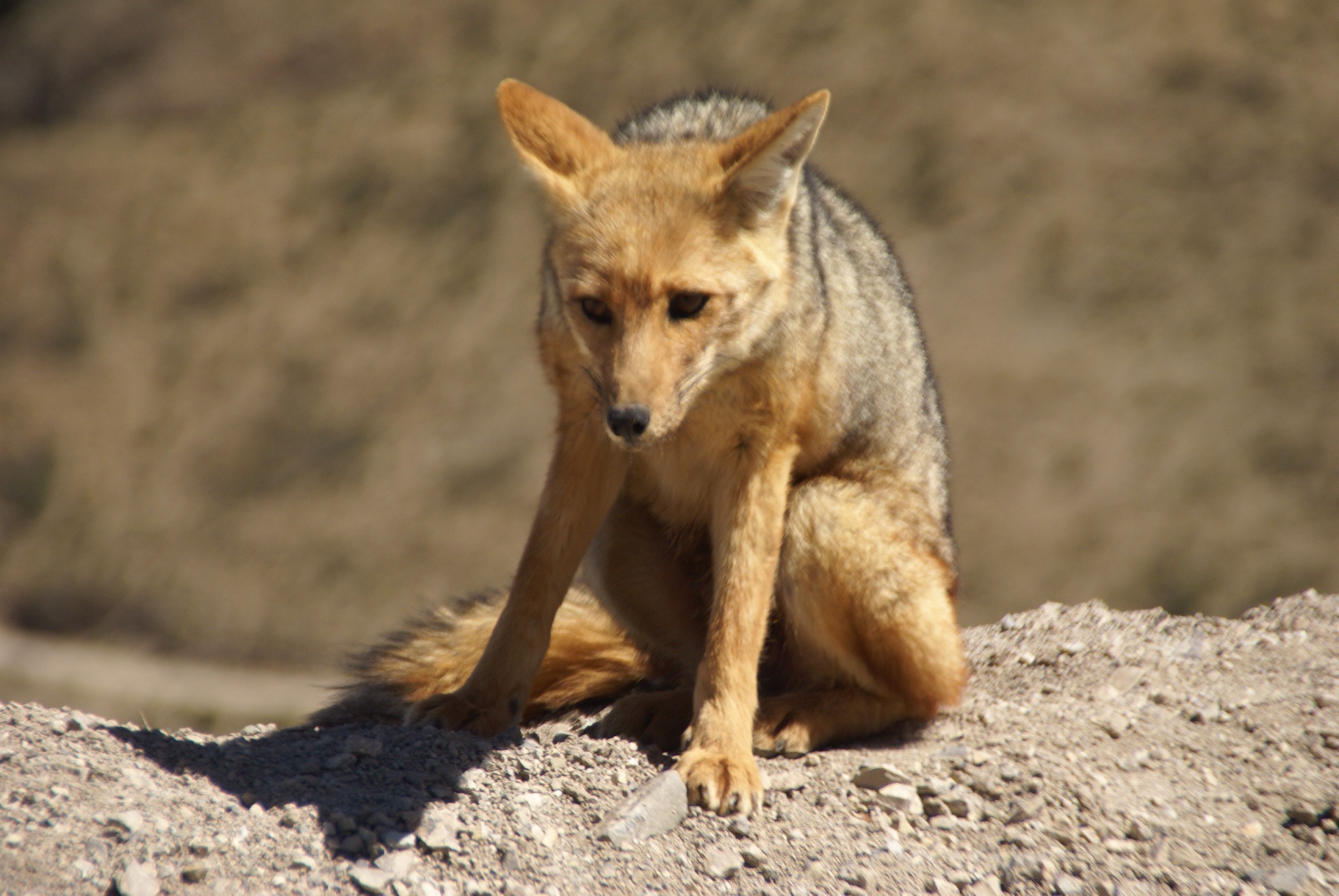
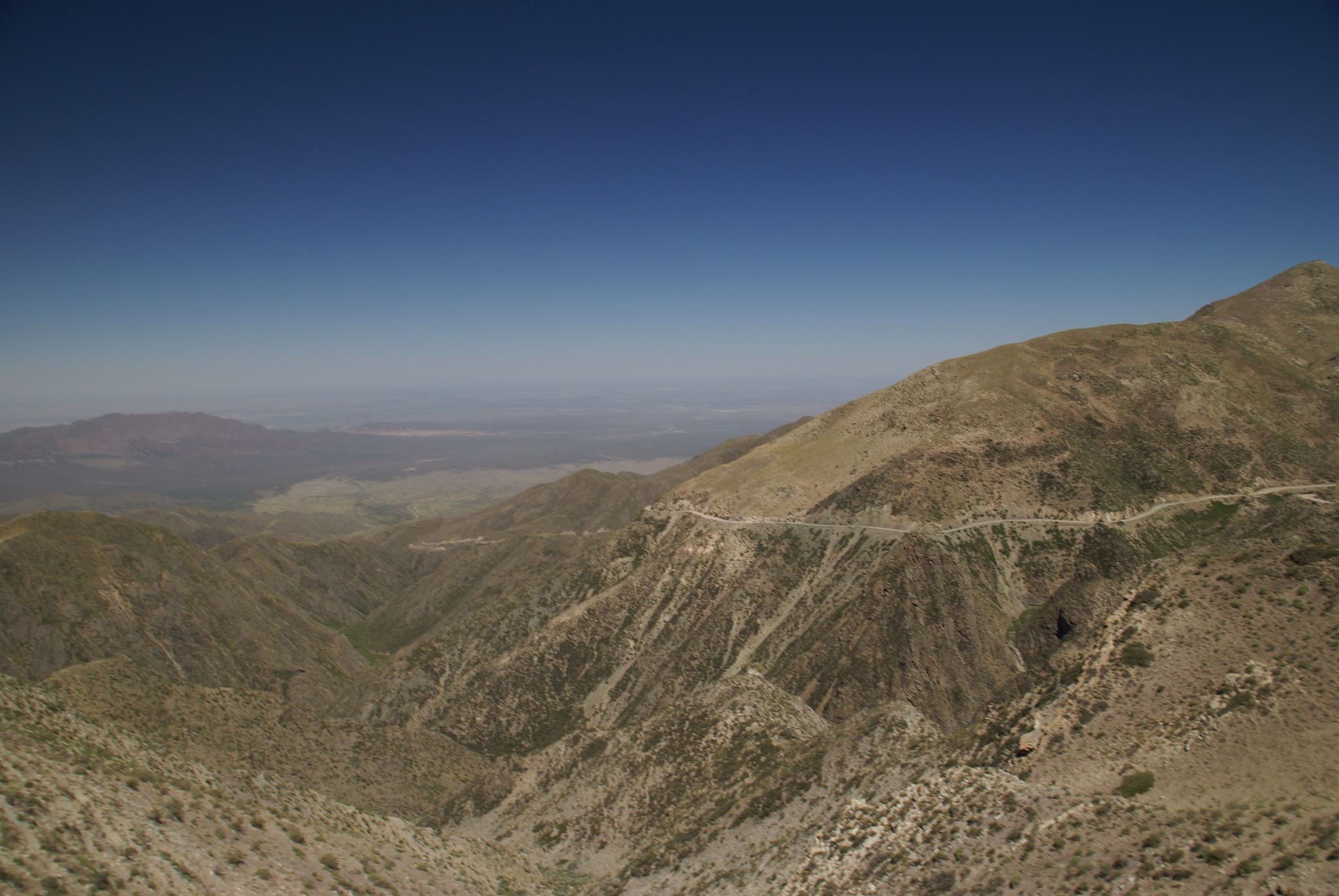
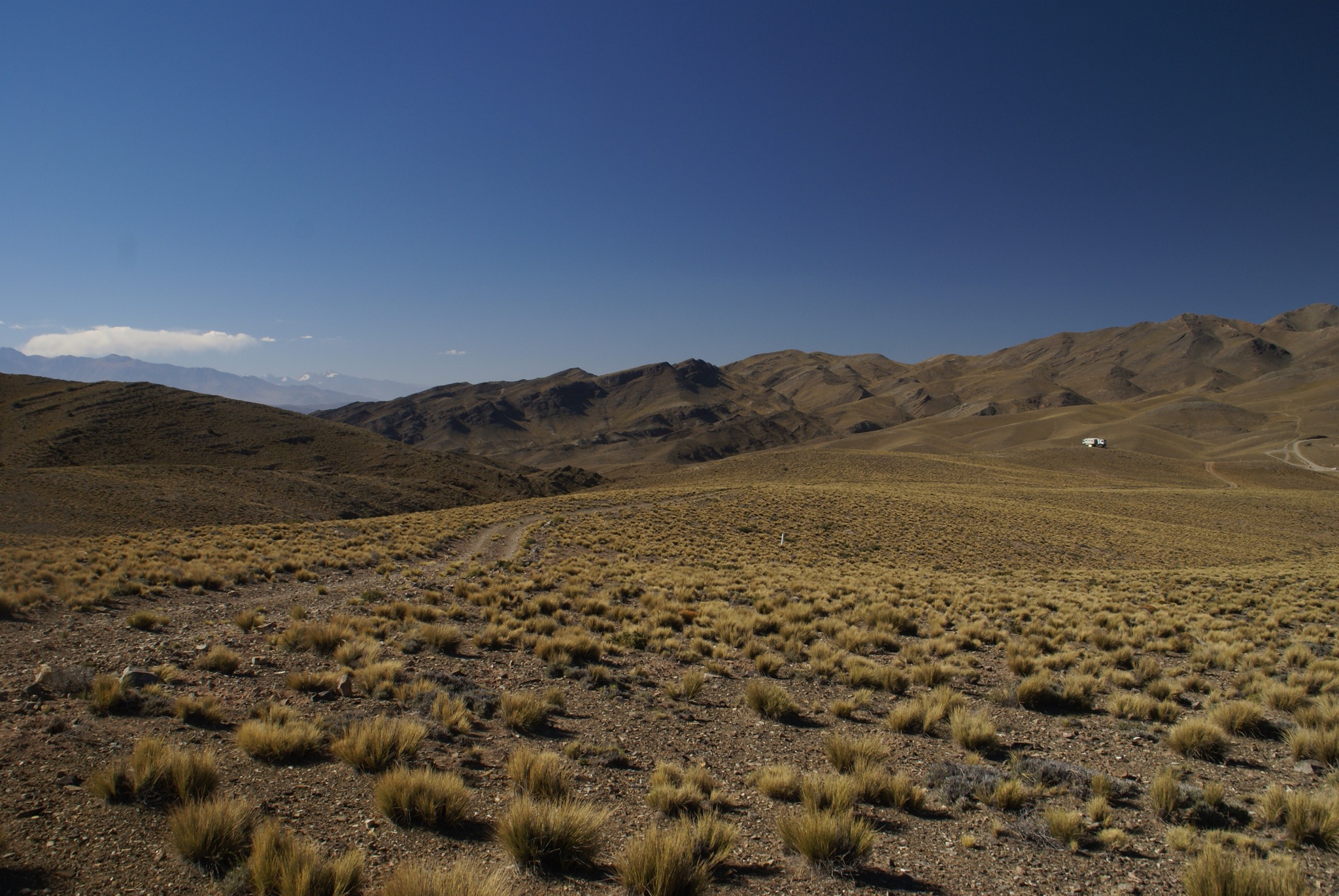
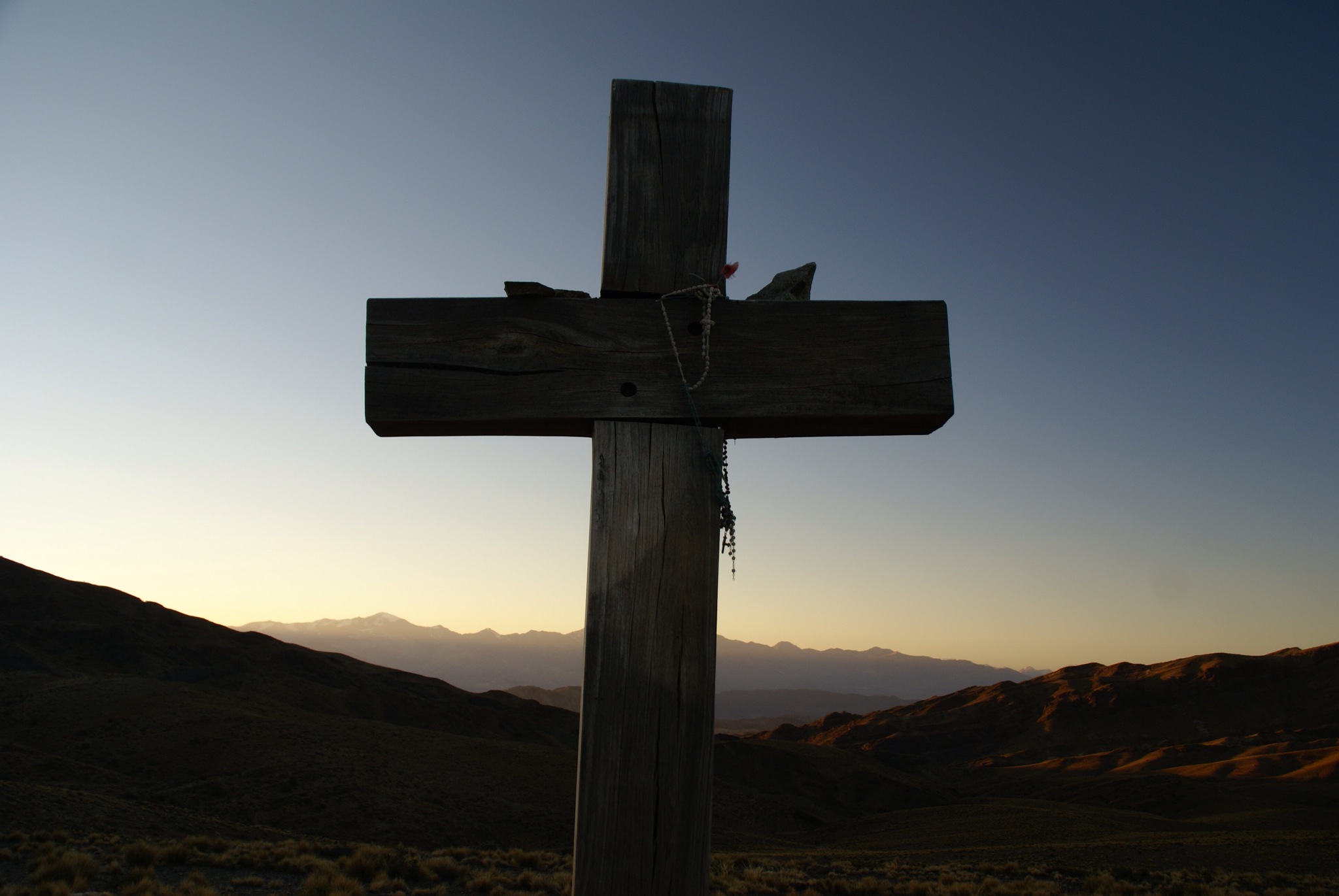


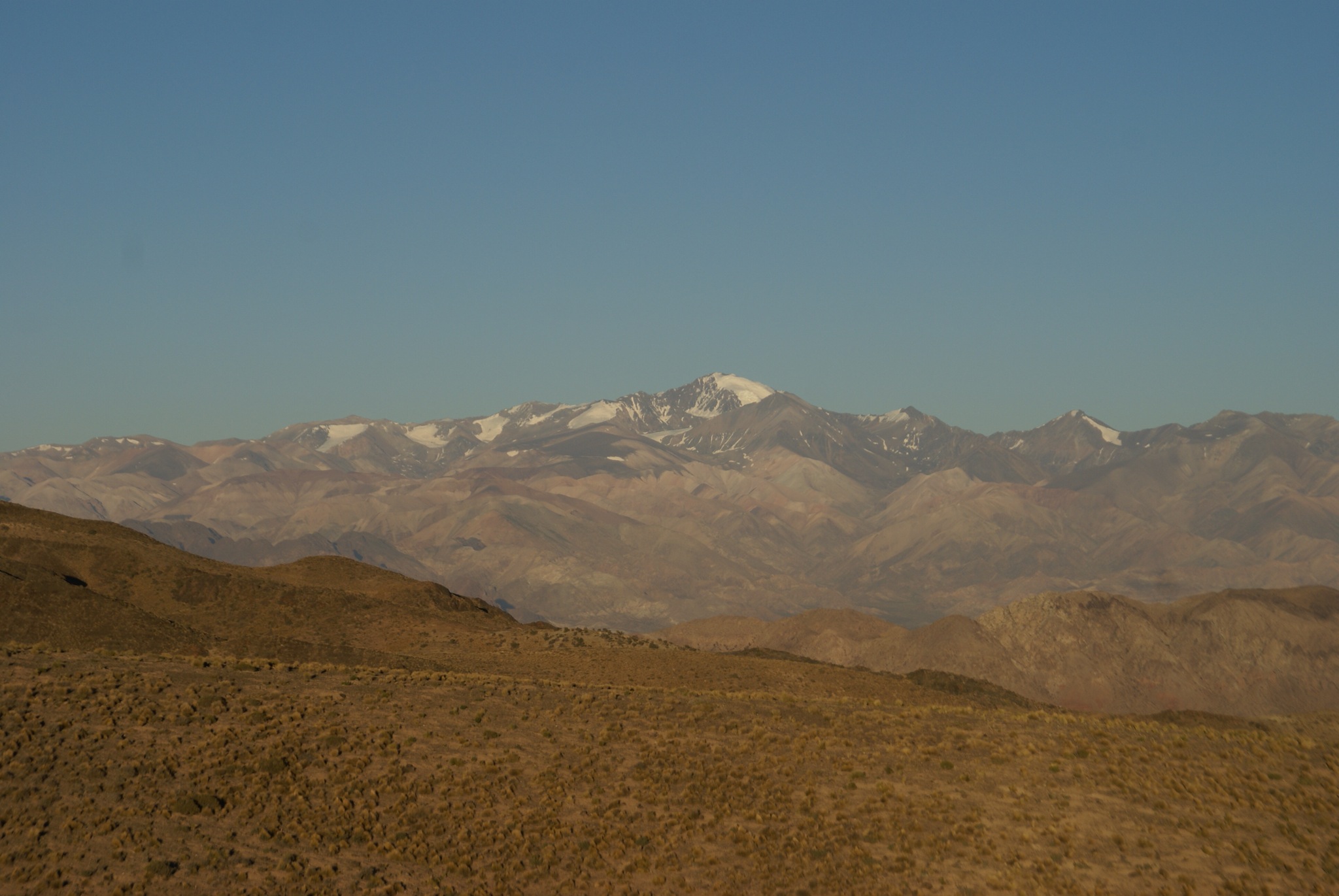
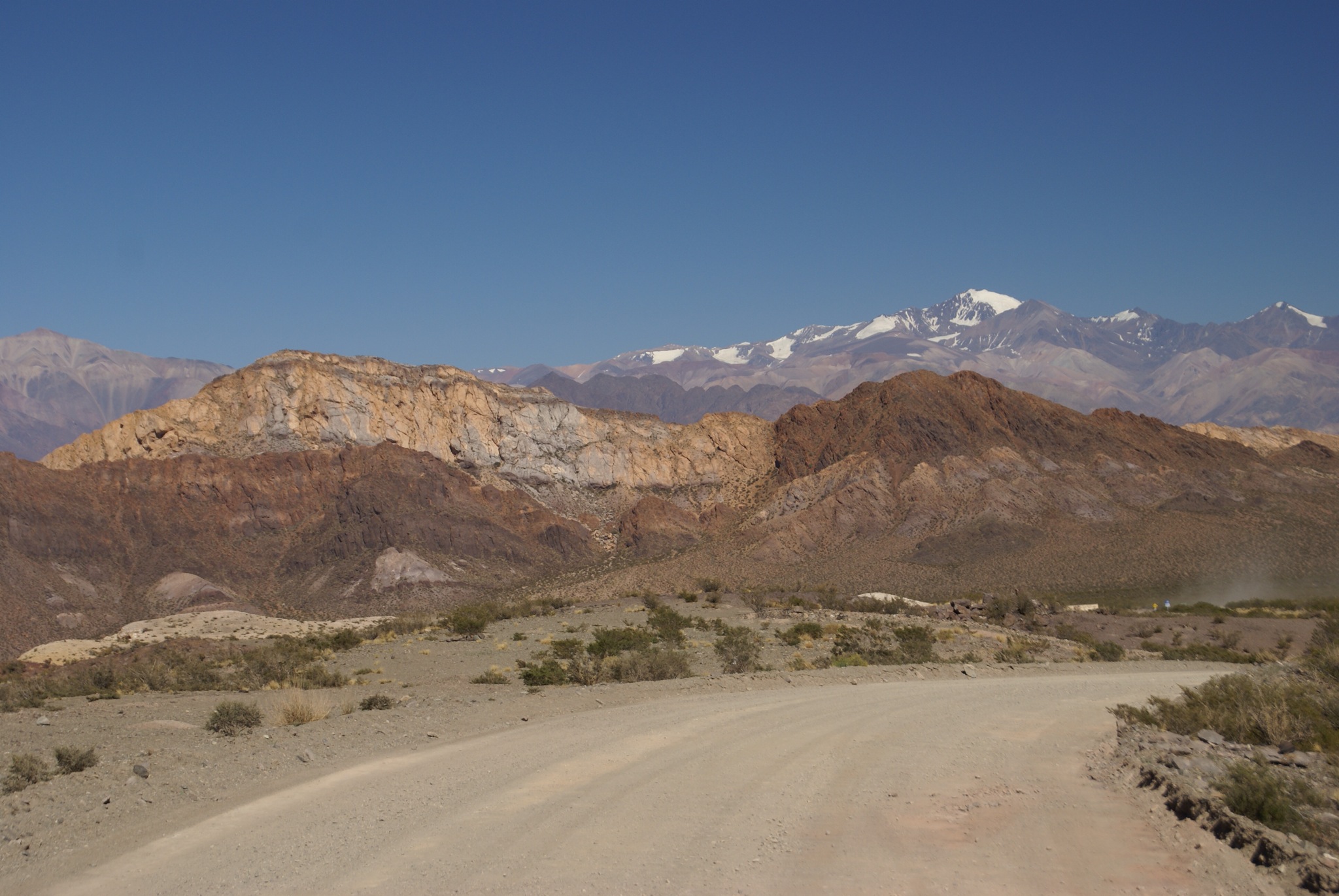
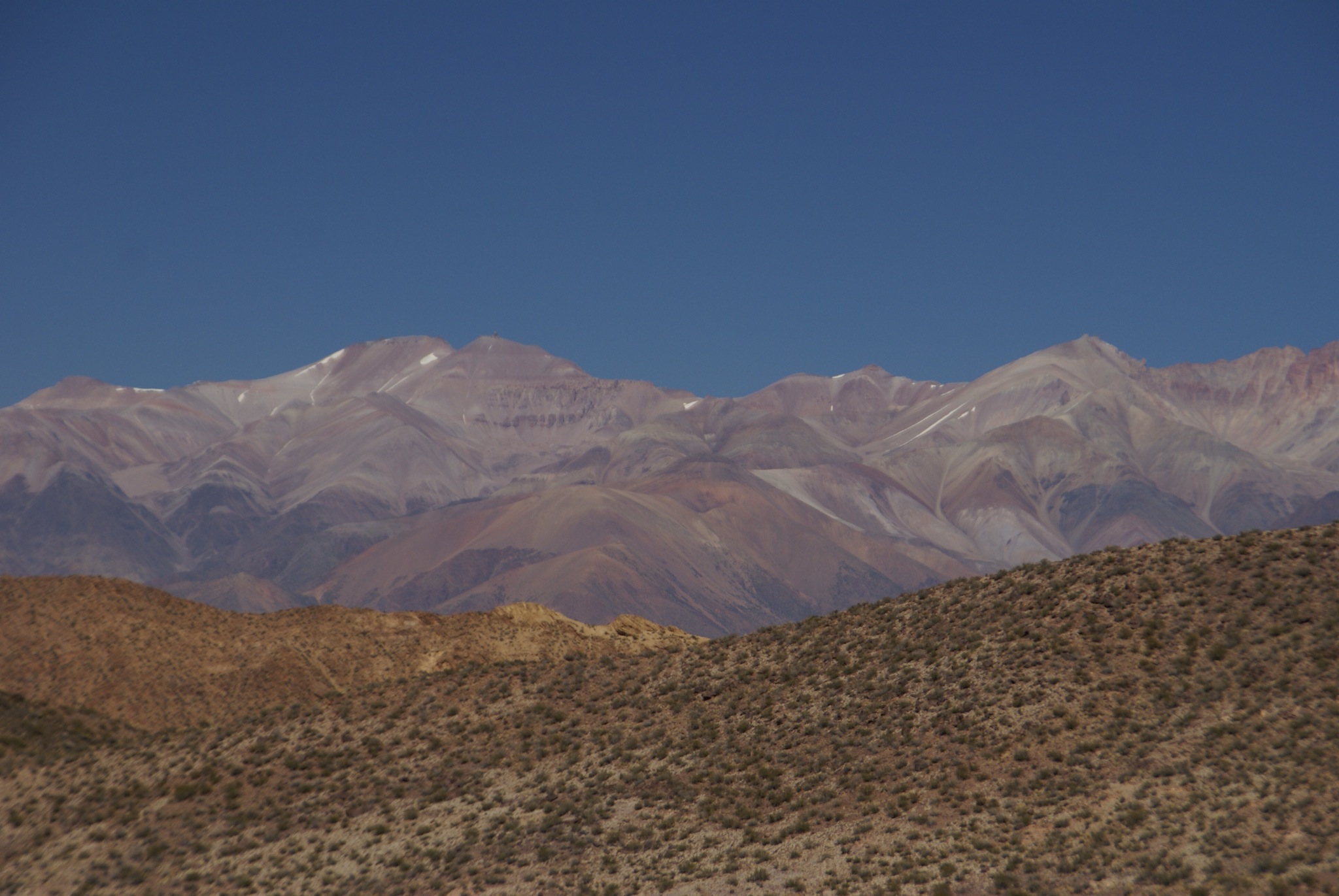 The film "Seven Years in Tibet" were filmed around the small town of Upsallata, as the scenery looks very much like the Himalayas. Rolling into town we'd had hoped to go for a coffee in a cafe filled with props from the film, supposedly a rather strange experience in such a South American town, but it was closed. We went for the only slightly less surreal option of a coffee in a Swiss chalet instead.
The film "Seven Years in Tibet" were filmed around the small town of Upsallata, as the scenery looks very much like the Himalayas. Rolling into town we'd had hoped to go for a coffee in a cafe filled with props from the film, supposedly a rather strange experience in such a South American town, but it was closed. We went for the only slightly less surreal option of a coffee in a Swiss chalet instead.
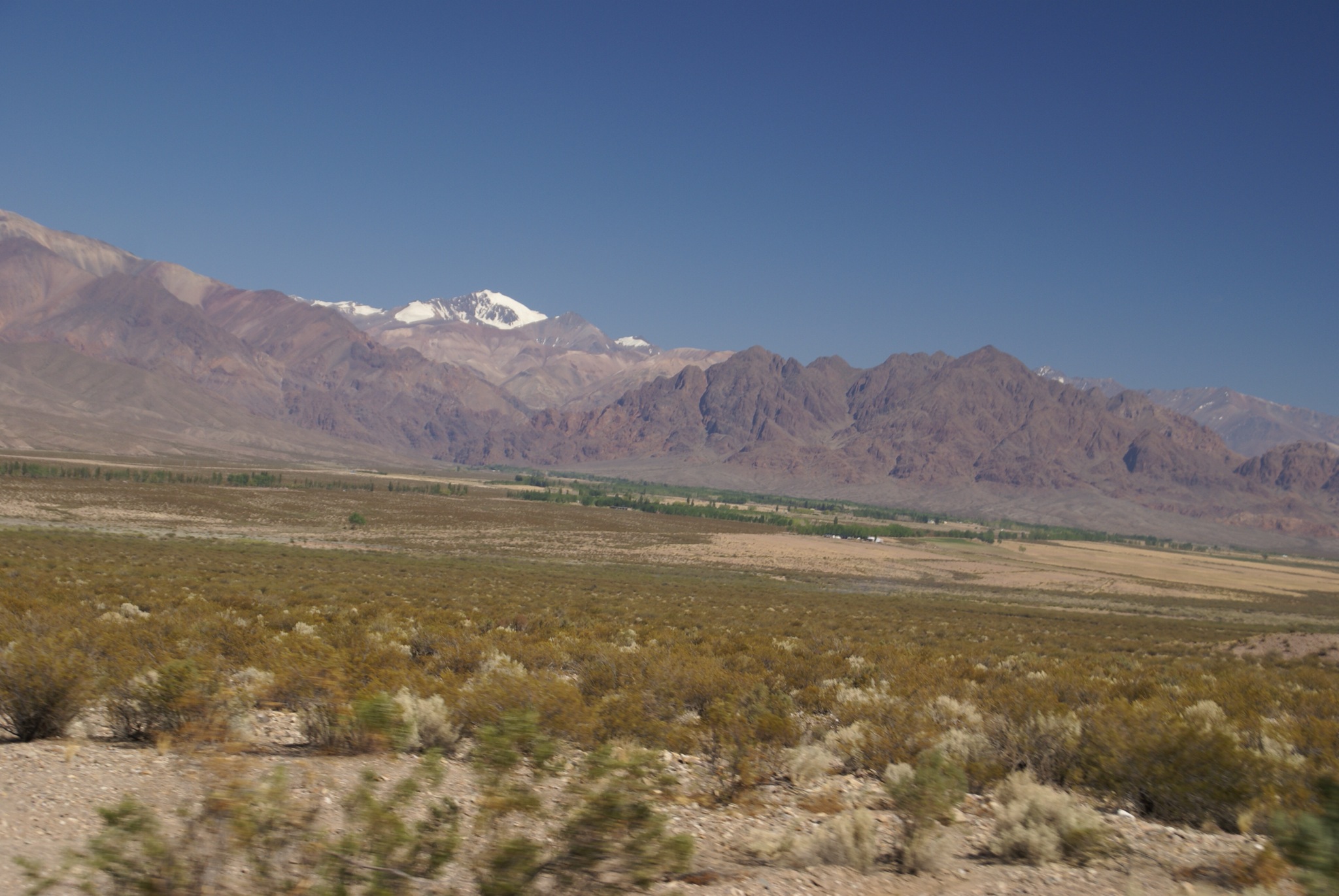 Alisha was concerned that Santa wouldn't be able to find us and was only reassured when Steve told her that he had used our "Spot" GPS tracker to let him know our exact location. Thankfully Santa found us and we were awoken at 6.20 by delighted squeals. We had presents under our makeshift tree, dead branches in a bucket decorated with lots of homemade decorations that the girls have been working on for the last few weeks.
Alisha was concerned that Santa wouldn't be able to find us and was only reassured when Steve told her that he had used our "Spot" GPS tracker to let him know our exact location. Thankfully Santa found us and we were awoken at 6.20 by delighted squeals. We had presents under our makeshift tree, dead branches in a bucket decorated with lots of homemade decorations that the girls have been working on for the last few weeks.
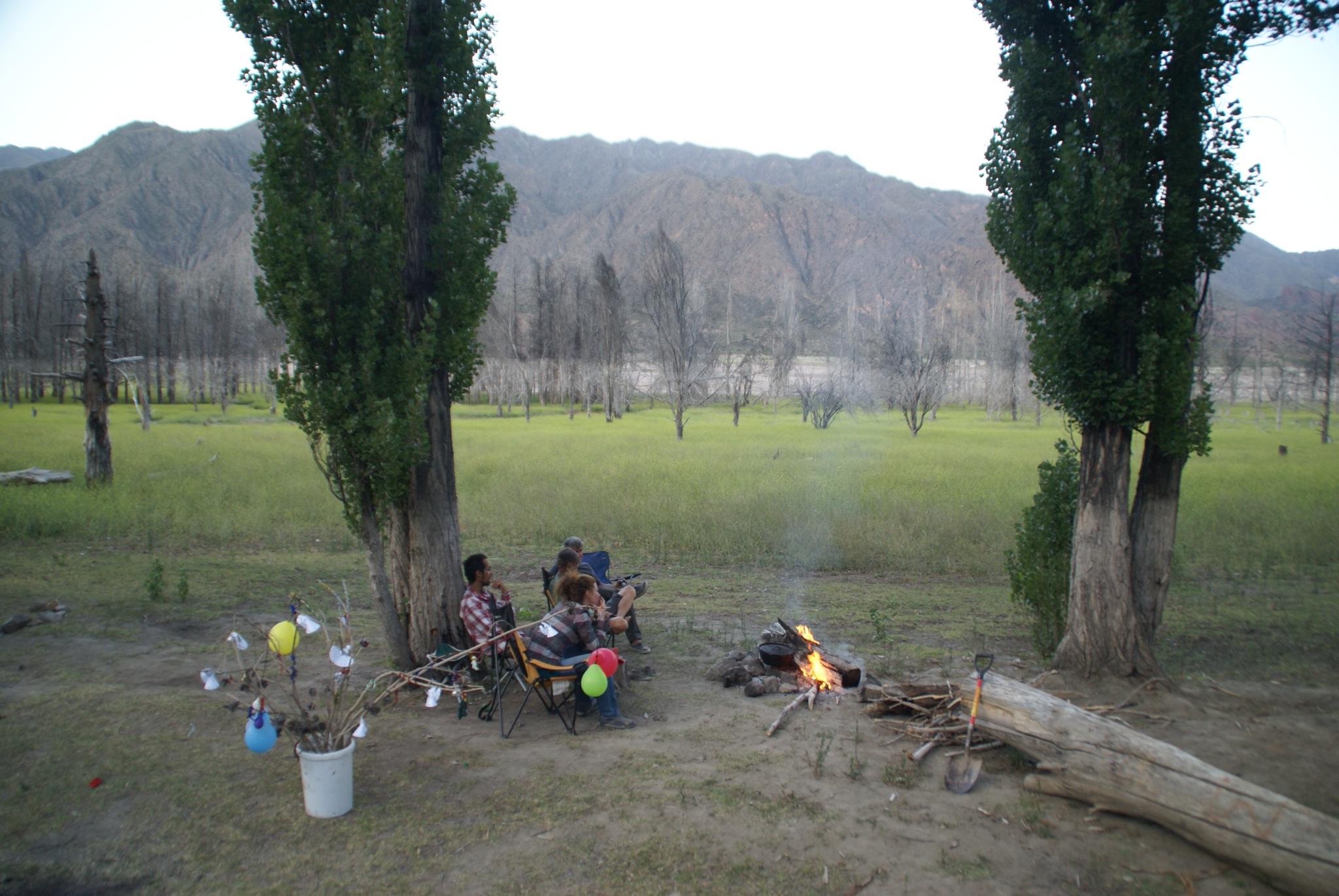 Luckily it was just a short walk to a small village that had a free wifi signal so we could catch up with our families celebrating in Europe. Of course it isn't as good as being with them but it was lovely to talk to them all. The boys got going barbecuing a huge quantity of beef, pork and sausages. By sun down we were truly full with all the meat, sides and Alisha's delicious apple pie served with custard. And of course, we had to wash it down with some Argentinian Malbec.
Luckily it was just a short walk to a small village that had a free wifi signal so we could catch up with our families celebrating in Europe. Of course it isn't as good as being with them but it was lovely to talk to them all. The boys got going barbecuing a huge quantity of beef, pork and sausages. By sun down we were truly full with all the meat, sides and Alisha's delicious apple pie served with custard. And of course, we had to wash it down with some Argentinian Malbec. 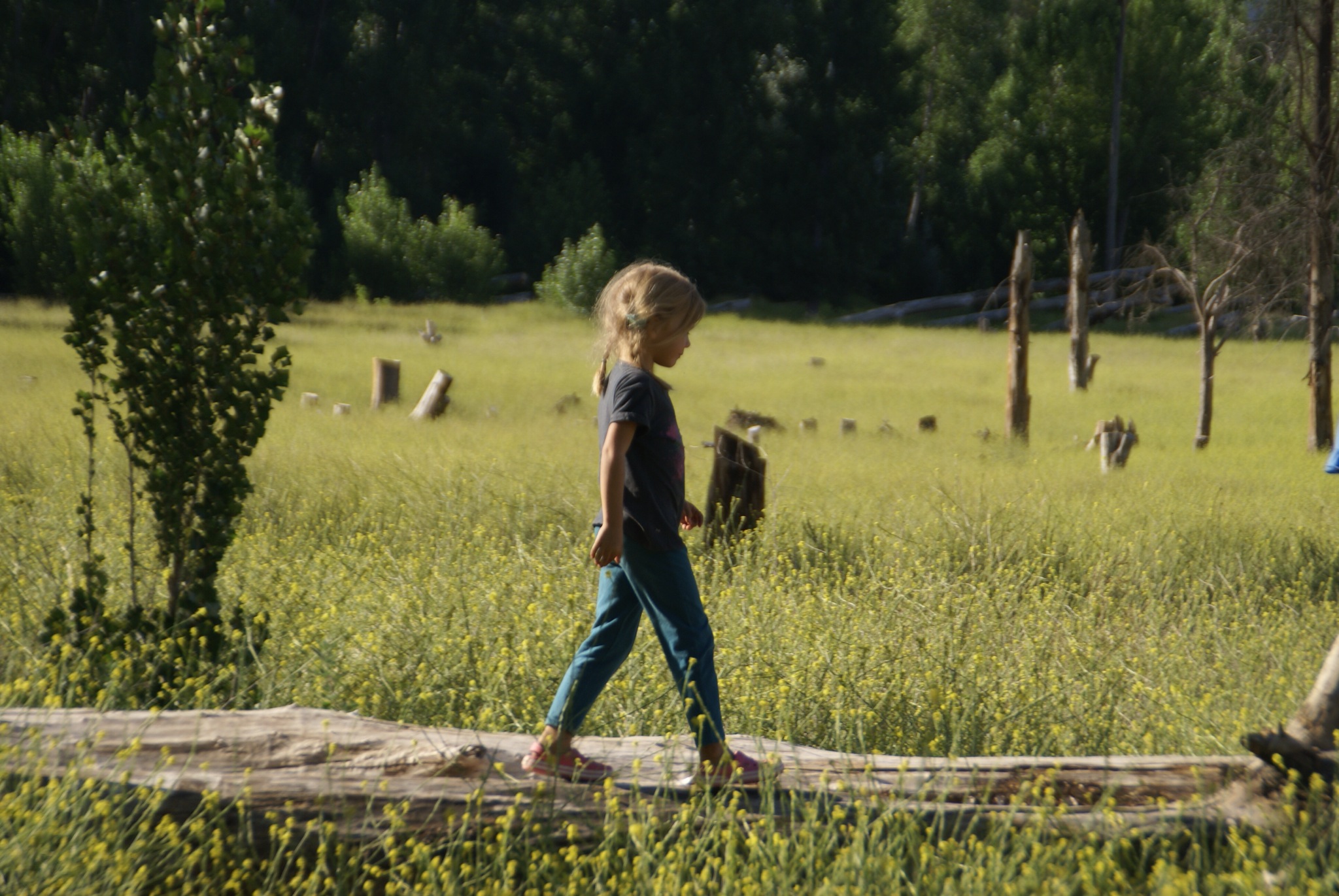

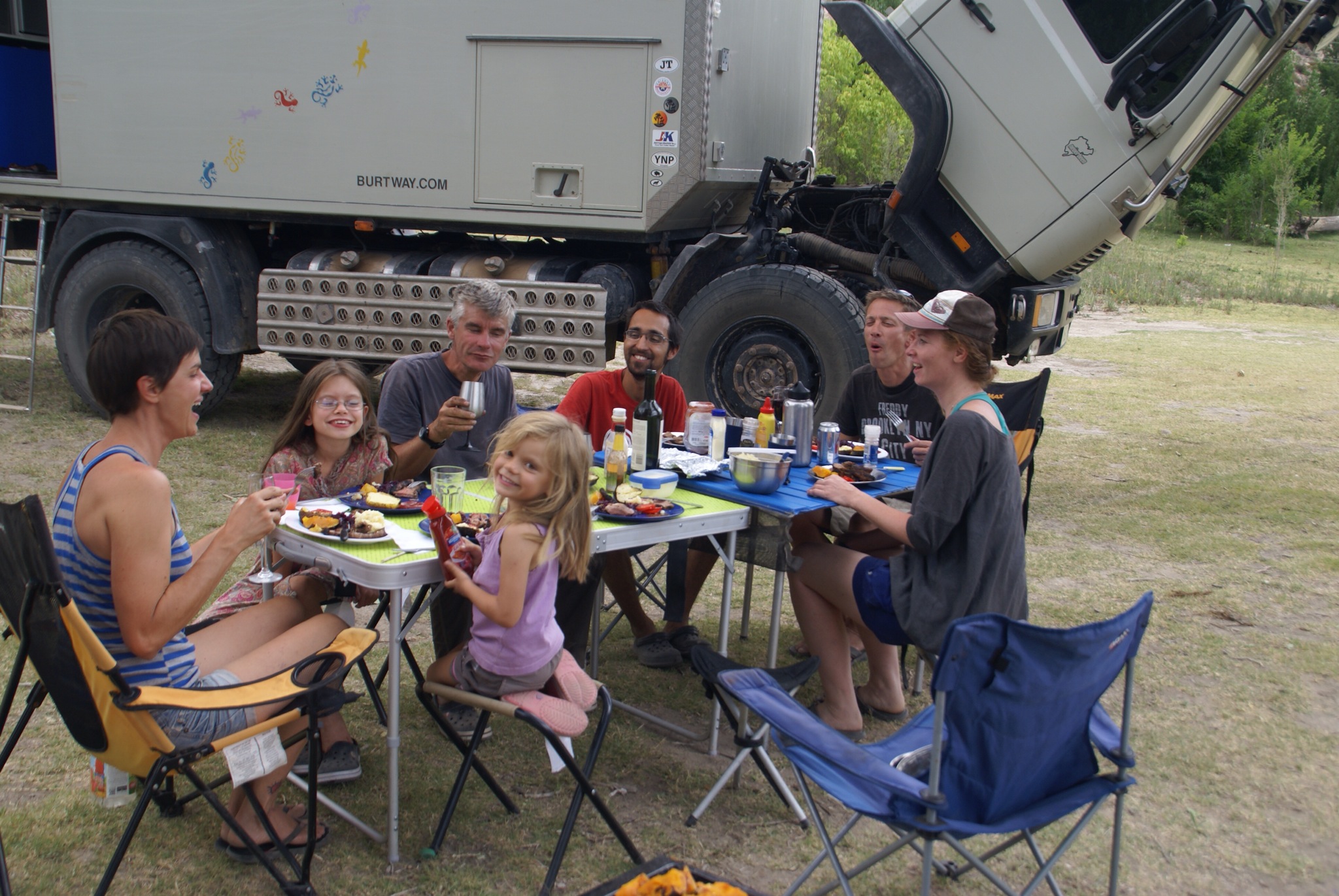
 As we sat round the fire that night, all the girls indulged in a bit of spa time painting our toenails. It's not often that us overlanding ladies get a chance to do a bit of pampering.
As we sat round the fire that night, all the girls indulged in a bit of spa time painting our toenails. It's not often that us overlanding ladies get a chance to do a bit of pampering.
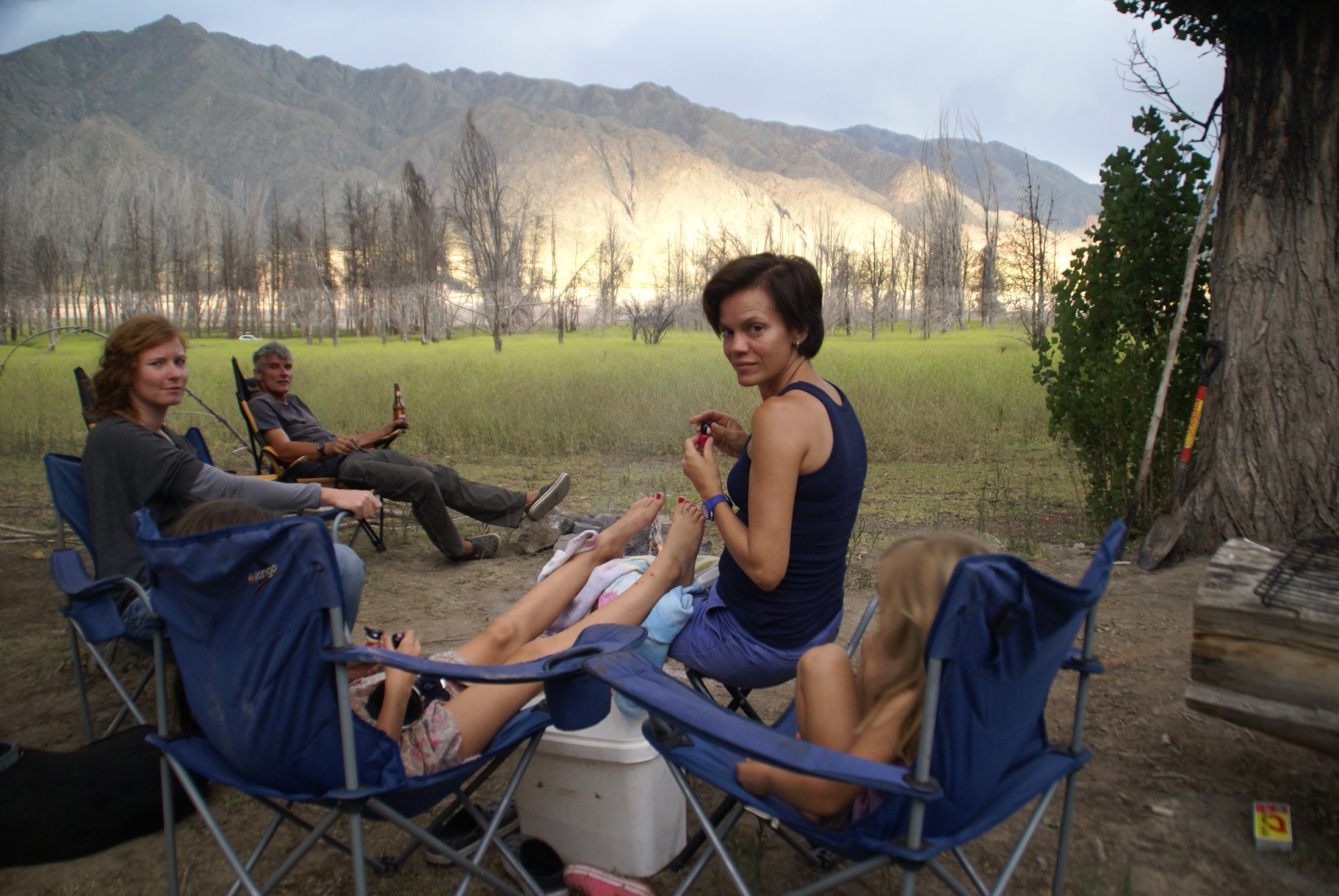
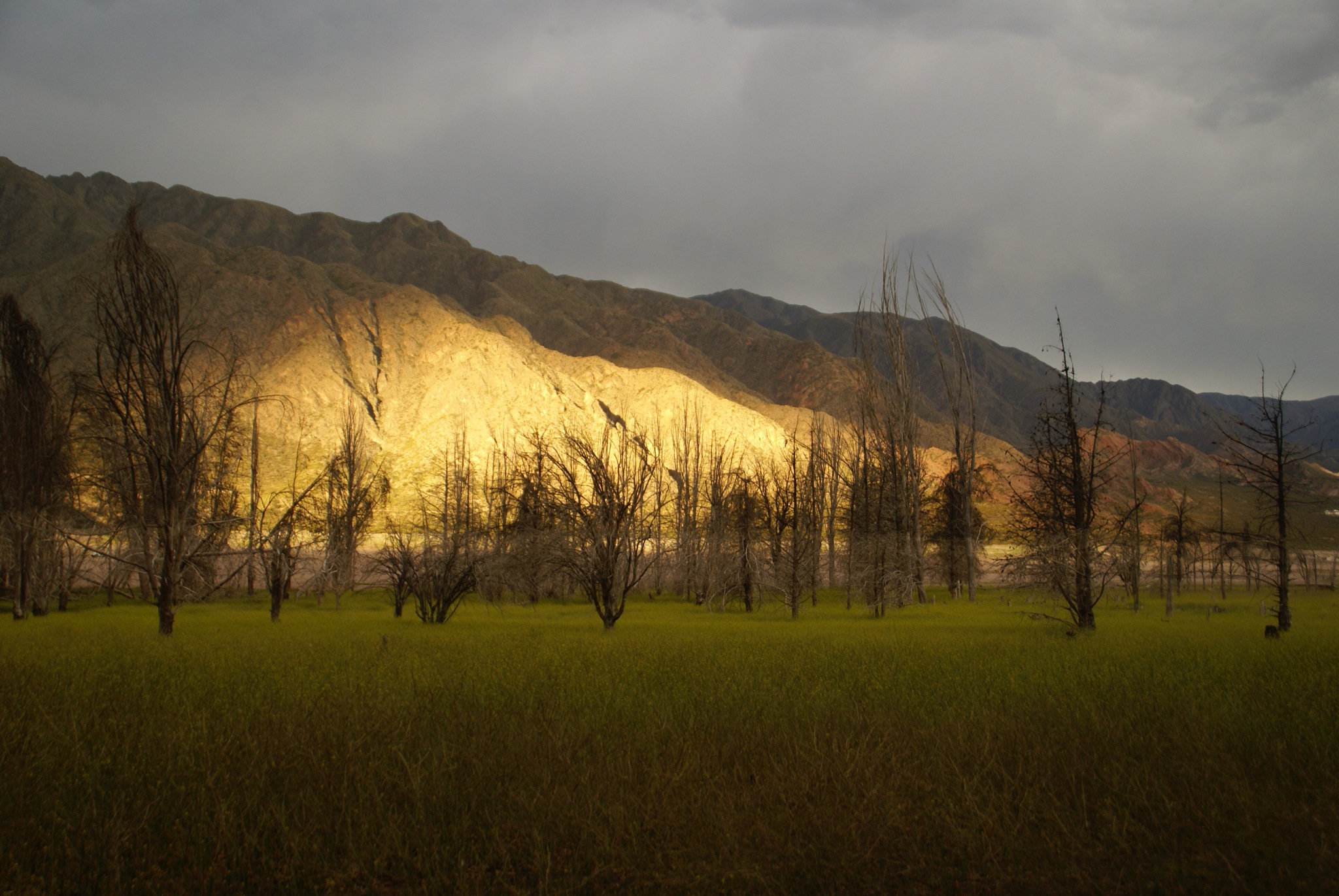
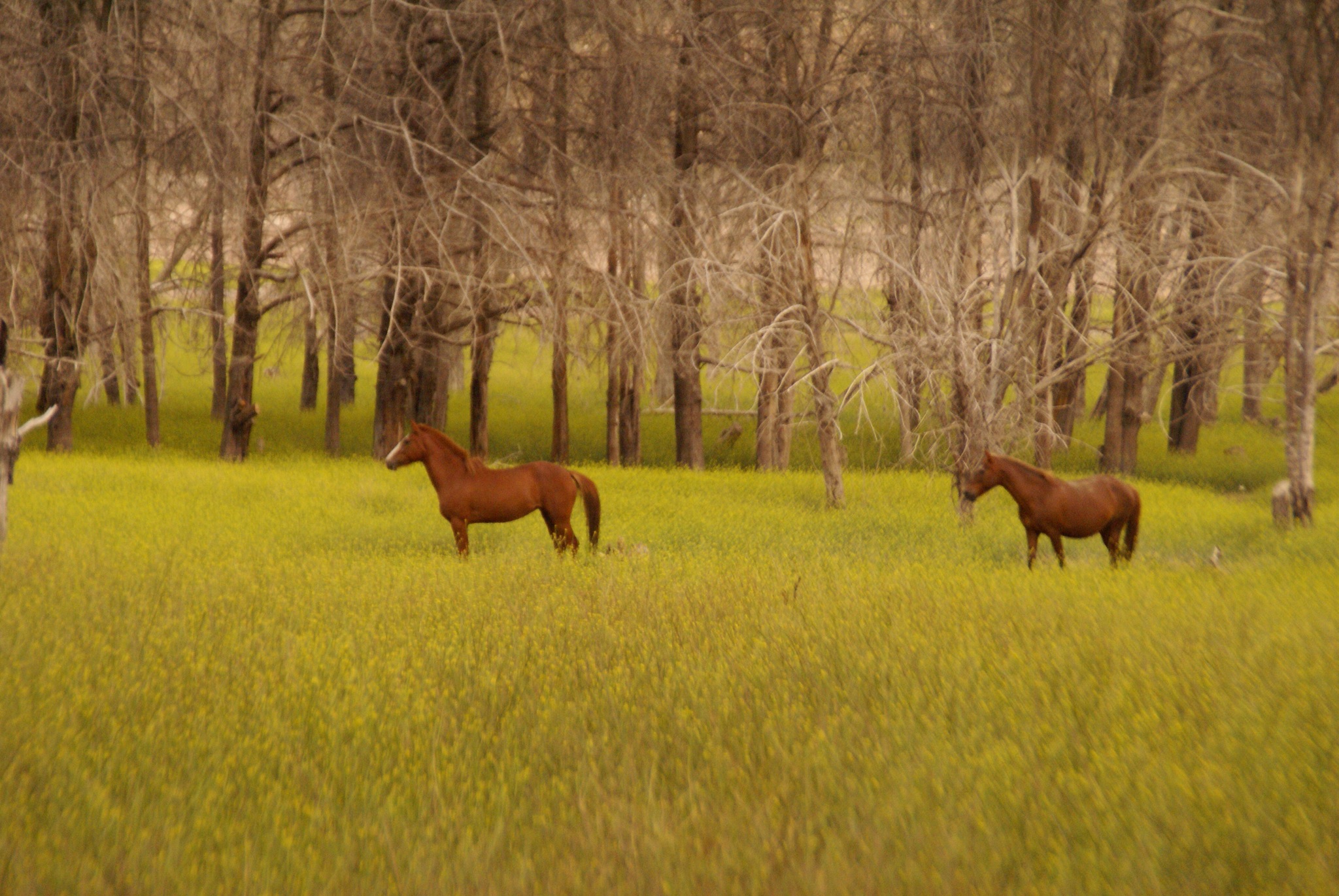 We waved goodbye to the Swiss on Boxing Day as they headed to Mendoza, I'm sure we will see them again as we are all heading south. After not having seen any other Overlanders for months, we are seeing more and more. Everyone is heading south for the short window of better weather in Patagonia, so there is a funnelling affect going on. The two trucks headed south towards Laguna Diamente, a stunning high altitude lake with a perfect come shaped volcano behind. It was a beautiful drive on the flat scrubby pains with the Andes looming on our right hand side all the way. When we got to the entrance to the park we found that the high pass road was still blocked with snow, which would probably take at least another week to melt. Heading down a side track we found a place to park up for the night overlooking a gorge.
We waved goodbye to the Swiss on Boxing Day as they headed to Mendoza, I'm sure we will see them again as we are all heading south. After not having seen any other Overlanders for months, we are seeing more and more. Everyone is heading south for the short window of better weather in Patagonia, so there is a funnelling affect going on. The two trucks headed south towards Laguna Diamente, a stunning high altitude lake with a perfect come shaped volcano behind. It was a beautiful drive on the flat scrubby pains with the Andes looming on our right hand side all the way. When we got to the entrance to the park we found that the high pass road was still blocked with snow, which would probably take at least another week to melt. Heading down a side track we found a place to park up for the night overlooking a gorge.
